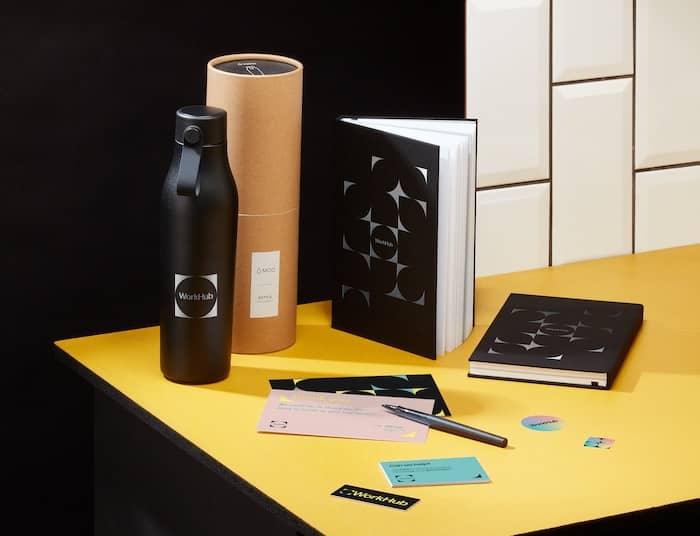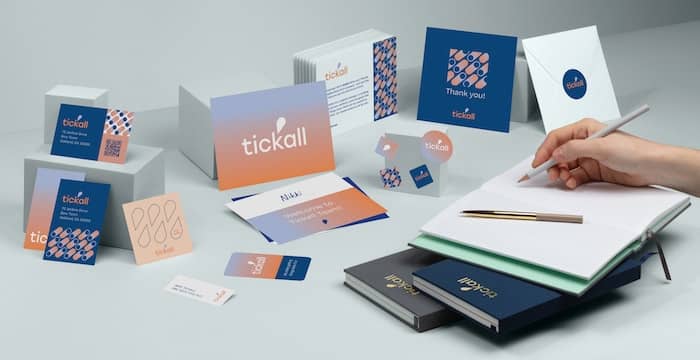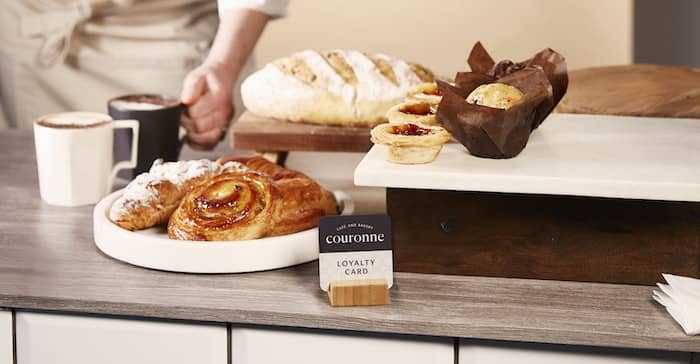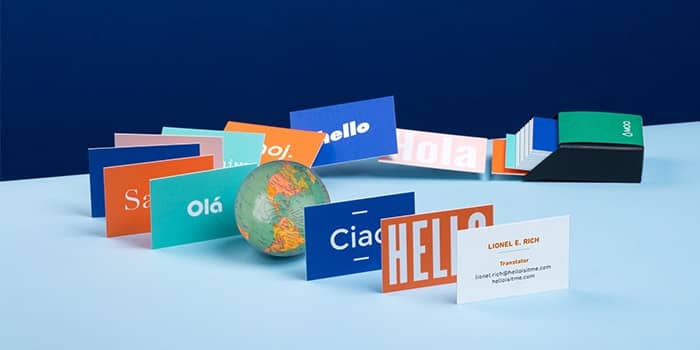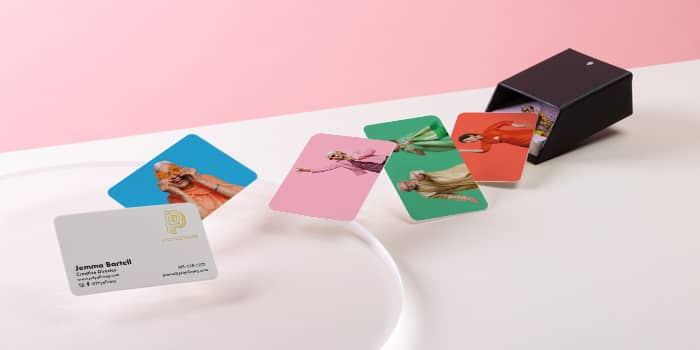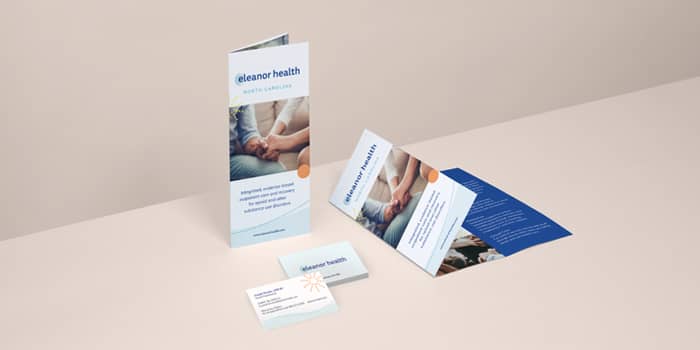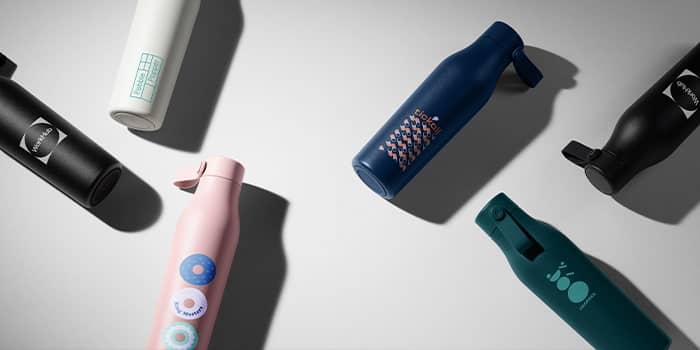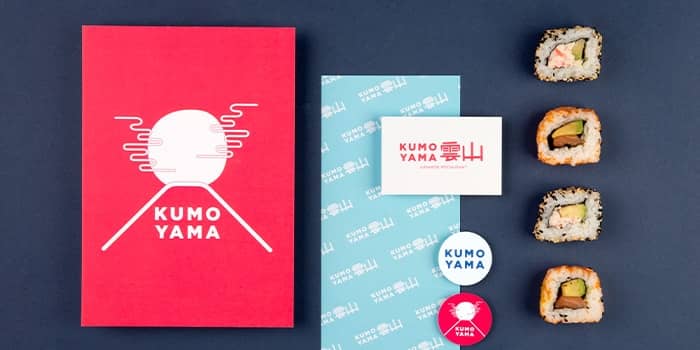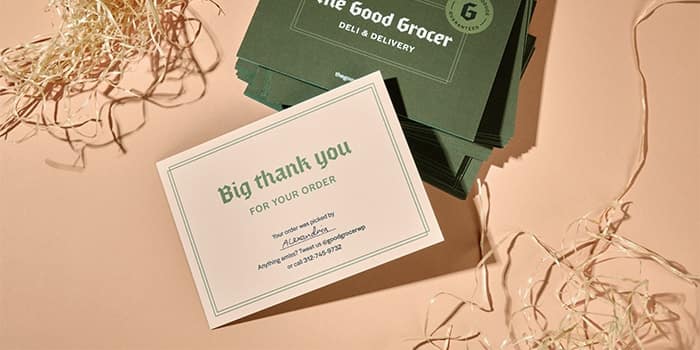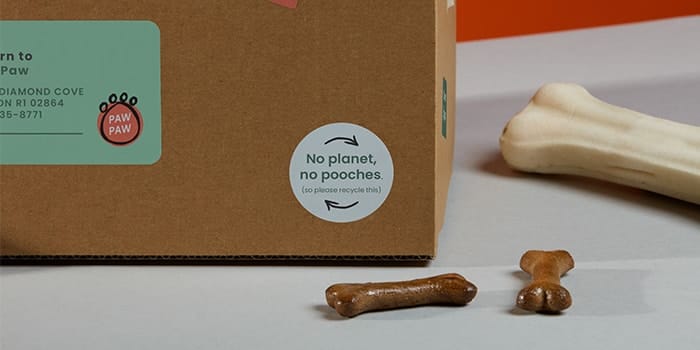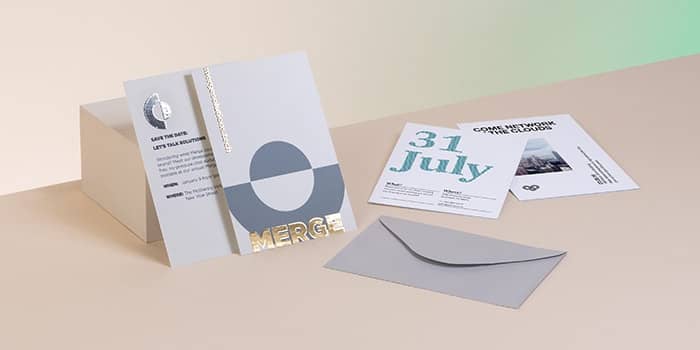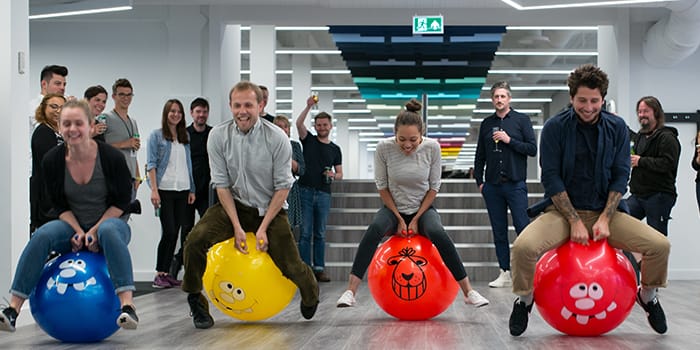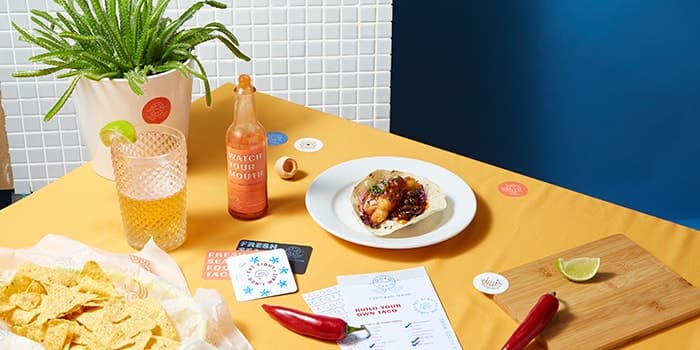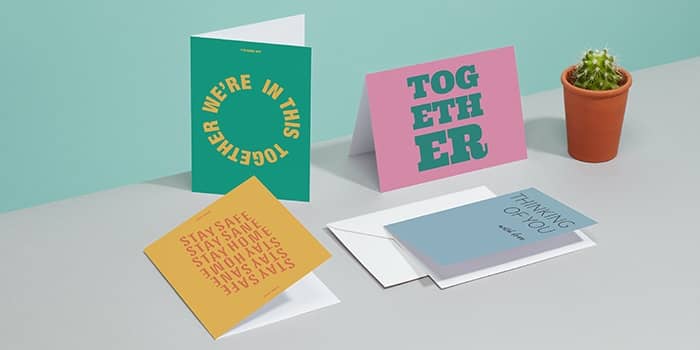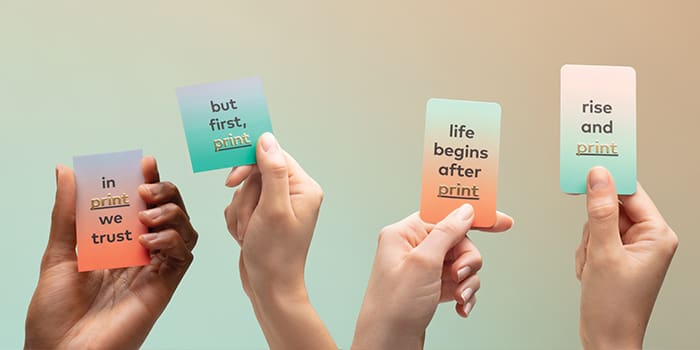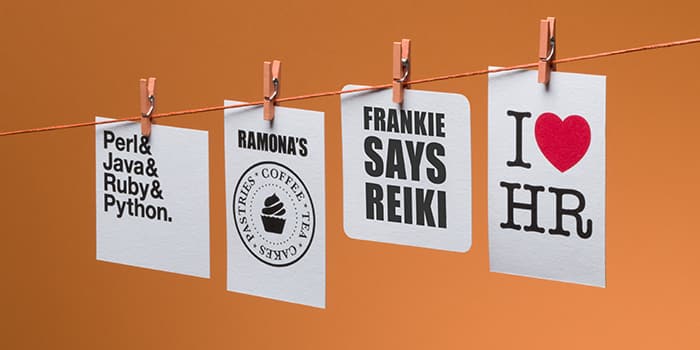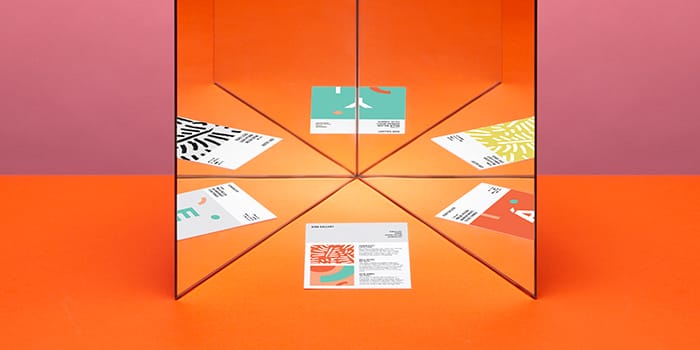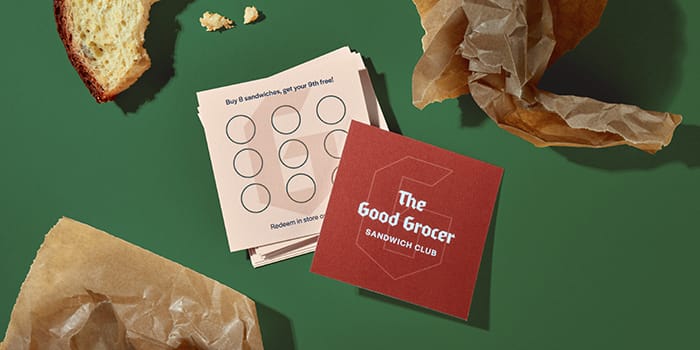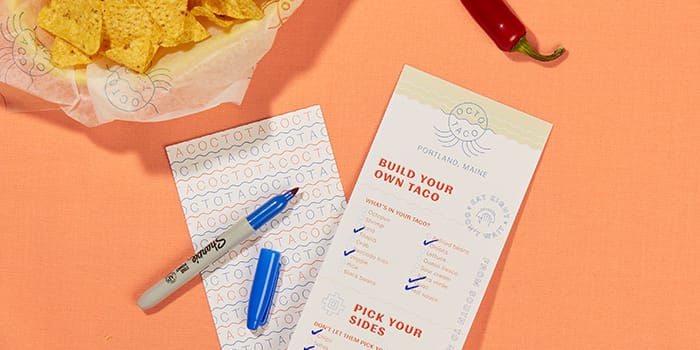Corporate wellness gift ideas for employees: What you need to know
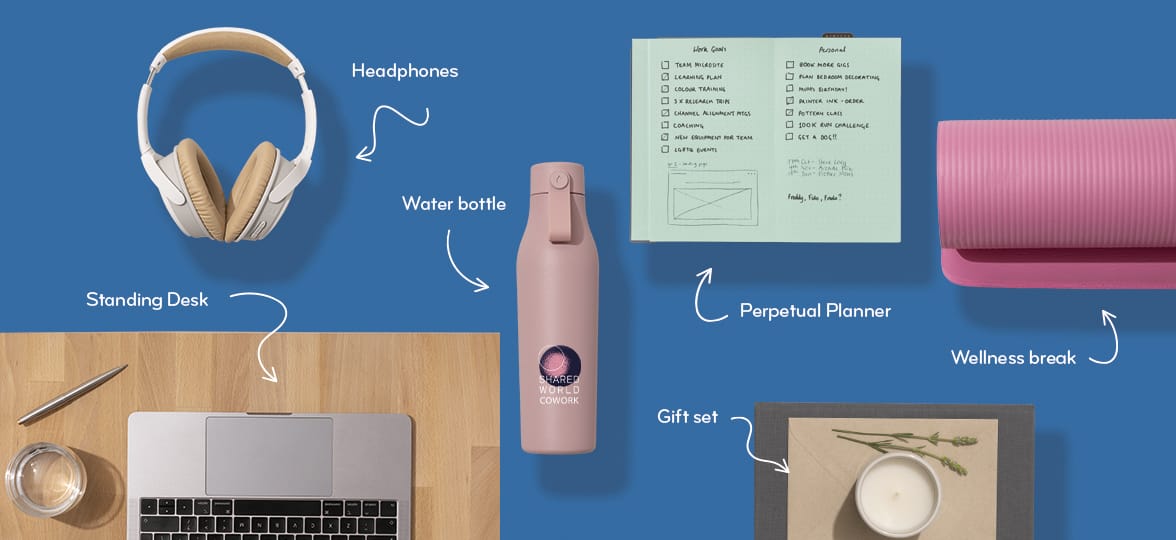
Whether you’re an experienced gift-giving pro or are fairly new to the concept, it’s easy to feel overwhelmed when hunting for the perfect wellness gift for bosses, coworkers, clients and prospects. This has only gotten more true as an increasing percentage of professionals conduct all or most of their work remotely.
It’s challenging enough to find the right present for someone you spend five days a week with — let alone a peer you’ve never actually met in person. The good news is that all it takes is a little research and a bit of strategy. Afterward, you’ll be well on your way to finding a gift that not only secures a permanent place on their desk, but also inspires healthy habits in and out of the workplace.
With all of that in mind, let’s break down some best practices for corporate giving and how the right gift can foster corporate wellness across your network.
The rise of wellness products and programs
Corporate wellness programs have been gaining some serious traction over the past few years. From the ability to positively impact peers’ mental health to fostering stronger connections among coworkers and clients alike, a well-thought-out health initiative can make a major difference.
Although the concept of corporate wellness may seem like a recent development, the idea has actually been around for over 70 years. As Corporate Wellness Magazine writes, companies such as Texas Instruments, Rockwell and Xerox had all instituted employee fitness programs by the 1950s. As leaders became more aware of the negative impact stress had on workers, these early programs were created in an effort to help employees address work-life balance.
However, we should keep in mind that we’ve come a long way in just a few decade’s time. We all know that health comes in many forms — physical, social, mental, you name it. Just some examples of health-focused movements you may see out in the wild today include:
- Taking clients or employees out to exercise classes as a way to get out of the office and stay moving.
- Offering on-site lessons ranging from different physical activities, crafting, and professional development courses.
- Creating fun, competitive challenges to hit a certain amount of steps per day.
And while the idea of promoting healthy behaviours among employees may not be an entirely new one, COVID-19 and its global impact redefined the market in a major way.
The corporate wellness market is estimated to reach over $87 billion by 2026
One study from ReportLinker has found that the corporate wellness market is estimated to reach over $87 billion by 2026. Looking toward the future, the mental and physical wellness of business professionals will be viewed as a must-have for corporate strength, stability, sustainability and growth. Additionally, today’s health programs are no longer just limited to coworkers — companies across every industry have begun expanding these initiatives to clients as well. It’s a great way to demonstrate a company’s values to both current and would-be customers. Not only does your company talk the talk, but you can walk the walk.
As leaders around the world work to adjust their corporate wellness plans to match the needs of their network, pulling inspiration from these concepts across workplace gifting initiatives will similarly become a top priority.

The benefits of corporate wellness gifts
While offering a comprehensive health program will help organizations establish a powerful competitive advantage down the line, there are several benefits already being associated with these initiatives and their related gifts:
- Increase productivity: Across the board, organizations that incorporate health-based values into day-to-day operations have seen lower rates of absenteeism and a higher degree of productivity, as explained by the SHRM.
- Boost engagement: When employees are given the tools to manage their long-term health, it becomes far easier to achieve a healthy work-life balance and avoid creative burnout.
- Reinforce strong corporate values: For clients and employees alike, having a tangible reminder of your company’s values will serve as a strong demonstration of your culture and your commitment to your peers.

In addition to these benefits, leaders who offer health-focused gifts to their customers and clients are also positioned to attract and retain some of the world’s top talent. In MetLife’s annual U.S. Employee Benefit Trends Study 2021, the company identified the top three factors that will affect the workplace of the future:
- Employee well-being (74%).
- The ability for employees to work remotely (71%).
- Employee mental health, stress and burnout (70%).
Alongside these considerations, more than 70% of professionals rank work-life management offerings among their top five priorities if they were to switch companies. And while almost every organization has found a way to offer employees the option to work remotely in some capacity, creating a wellness program and corresponding gifts that tick all of these boxes remains pretty elusive.
70% of professionals rank work-life management offerings among their top five priorities
Good thing we’re about to change that together.
Developing your own corporate wellness program gifts
As you begin to consider which gifts make the most sense for your company, let’s start from square one: your mission statement and values.
Your company culture needs to be innately aligned with wellness in order to present a genuine and organic message that both employees and clients can relate to. Otherwise, your gift can come off as confusing or, in the worst-case scenario, inauthentic.
To ensure your gifting program aligns with your organization-wide message, keep these tips in mind:
- Listen and learn: One of the most valuable resources during this time will be your own employees. Create feedback forms to better understand what initiatives they’re interested in and the gifts that they would appreciate receiving.
- Do your research: The goal here is to find a gift that will be used for years to come. What you don’t want to do is give your employees — or your customers — something that breaks or is no longer useful in a month’s time. Take your time finding the right vendor and feel free to ask for samples of their previous work. The best gifts will last for years to come, which will also help you cut down on potential waste.
- Start small: If this is your first gifting rodeo, it may be wise to start within your own company and gradually work your way to external stakeholders. That way, you can apply any lessons you learn along the way to future iterations of your gifts.
As you begin to better understand your employees’ interests and priorities when it comes to wellness, it will become much easier to find the right gift.
Picking the perfect gift: Top five ideas
When it comes to all things corporate wellness, remember that the industry is only set to keep on growing. However, that’s great news for you. With that expansion comes an almost infinite amount of options for you to choose from as you select presents for your peers.
To narrow down your search — and save you some serious time — let’s go over our top five favourite gift ideas:
1. Water Bottles
It can be tricky to find that perfect gift that works for everyone on your team. We recommend starting with something that’s a must-have item for any desk: a reusable Water Bottle.
When your team members and clients have a reusable water bottle, it’ll become much easier for them to drink water in any scenario, whether they’re running errands, at home or taking time off to travel. Wherever they are, they have a little piece of your brand alongside them. Plus, it’s far better for the environment than relying on single-use plastic water bottles. Think of it as corporate wellness meets sustainability.
And if you’re wondering about the cost of ordering lots of water bottles, think about buying from somewhere that offers corporate pricing. Like MOO Business Services, which offers print and design support for businesses of all different shapes and sizes. But more on that later.
2. Standing desk
Whether your employees are working in the office or at home, sitting for eight hours a day can quickly become tedious — not to mention the long-term health risks associated with these periods of inactivity. A convertible standing desk can be a great way to get on your feet while keeping up with the work at hand.
When organizations across the world adjusted to a remote workplace, many were left making do with the “home offices” they already had which often consisted of dining room chairs, kitchen counters or wherever a surface and an outlet were available. Even if you decide to offer a non-standing desk for their home or the option to select their own, making them more comfortable will help them stay focused in a not-so-traditional work environment.
While not every employee may be interested in using a standing desk, those who are will definitely appreciate the gesture — and we can all stand to benefit from a gift that helps reduce back pain after sitting all day long.
3. A wellness experience
A great gift doesn’t always have to be tangible. Another way to bring healthy living to the office — or give employees a way to get moving outside of the workplace — is by offering a wellness experience!
- Group classes: It can be pretty intimidating to step into your first fitness class. Offering employee-only lessons can break down that barrier and introduce your peers to new ways to stay active.
- Local, health-related wellness events: Look no further than your own community as a great source of inspiration, whether it’s an annual 5K or a weekly farmer’s market. Something as simple as a carpool list or giving employees time during the day to participate can make all the difference.
- Employee sport or recreation teams: Nothing fosters some healthy competition quite like an adult rec league. Send out a poll of which sports employees would be interested in and battle it out on the field. Teams can compete for bragging rights or a special prize.
If you’re feeling stumped, the best place to find ideas for your wellness experience is your very own team. Send out a feedback form asking for ideas that they’d be interested in, and maybe more importantly, those they would pass on it.
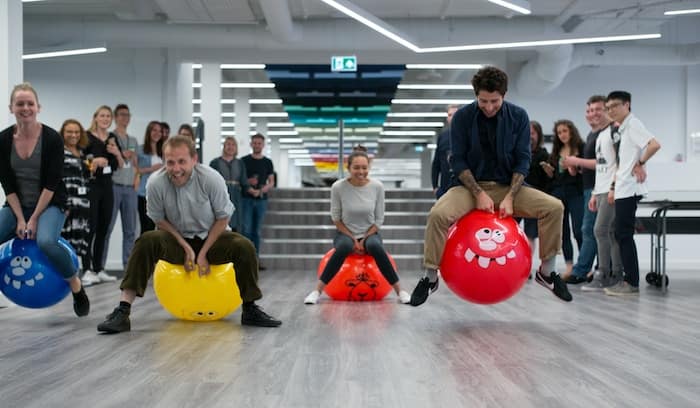
4. Headphones
Take one look around the gym and you’ll find nearly every member is using the same piece of equipment: headphones. One of the biggest benefits of opting for headphones is that they can be used in and out of the workplace, ensuring that recipients get even more use out of them. In fact, for many professionals, earbuds are just as important in the office as they are in the gym, helping them to really zero in on the project they’re working on.
As you select the right headphones for your wellness gift, look for Bluetooth-enabled options that will help you avoid any potential connectivity issues across different types of phones and computers.

5. Planners
Planners are a thoughtful gift that goes beyond scheduling meetings and jotting down to-do lists. They give your clients and employees a space to capture ideas and express themselves – a space to think. And they can open that Planner again and again. Take our Perpetual Planner. It’s Swiss-bound so it opens perfectly flat, and it’s dateless – that means you can buy it at any time in the year. It also comes with a Calendar Clip, that helps keep track of the days. And best of all, you can customize it how you like – so they’ll be thinking of you every time they open it.

6. Wellness gift baskets
Still can’t pick just one idea? Create a gift basket.
A basket of different products can serve as a great way to kick off your peers’ health journey while also making for a great presentation. Feel free to mix and match smaller wellness gifts, but always remember to prioritize quality over quantity. Spend some time considering each item you’d like to put in your basket. Rather than picking a random selection of gifts with no real rhyme or reason, explain your approach. You can even include a card that thanks employees or clients while also explaining the theme of the basket’s connection to your company’s values.
The secret to fostering connections through gifting is to ensure the presents you select will last over time and be something your recipients think of fondly. If you can’t see yourself using the item for over a month, it’s probably a better idea to select a different option.
As you begin creating your very own line of wellness-inspired gifts, look no further than MOO Business Services. There are three business plans to choose from. And each gives you access to our full catalog of branded products, easy customization and printing, support from our lovely team, and special pricing. In a nutshell, everything you need to get your new wellness initiatives started.
Want to know more about MOO Business Services? Fill out the form below and we’ll be in touch.
If your team tried to manually sort through each of your mentions on social media, you’d quickly find that there just isn’t enough time in the day. With so many different channels out there, it can feel impossible to wrangle them all into one holistic pulse check.
The good news is it doesn’t have to be that way. You don’t need to be everywhere at once to keep tabs on how customers feel about your company ― all you’ll need is a well-executed brand monitoring strategy.
Online brand monitoring explained
No matter what industry you’re in or the size of your organization, your team has one asset that’s more valuable than any one piece of marketing material: your brand. Your consumers’ perception of you is everything. Without a clear understanding of where your brand stands, it’ll be difficult to gauge exactly what that sentiment is and how you can improve it.
Brand monitoring sets out to address that challenge by continuously measuring your brand’s health, using analytics to gain insight about your company, its products and anything related to your image. It’s all about tracking your reputation and reception by the general public as well as your target audience.
Typically, a business will monitor as many touchpoints as possible in order to get a complete read on their customer base. Just think of your own shopping habits. You might hear about a product from a friend, research it, completely forget about it and then be reminded to purchase it by an ad weeks later. If that’s the case, you’re far from alone. Google says the average consumer interacts with at least three different channels before ever buying a product.
While there’s no one-size-fits-all strategy when it comes to the specific branding components you’ll want to track, most organizations opt to measure the following:
Brand name
Tracking discussions about your company online can be one of the easiest ways to get a clearer understanding of the public’s perception. Pro tip: Consider monitoring nicknames, abbreviations and common misspellings of your brand name so as to not miss anything.
Industry trends and innovation
Indirect news about the market you’re in can have a major impact on your brand as well. For example, a software company may have its digital marketing team monitor advancements made by competitors so that they can determine the changes needed to stay current.
Competitors
Speaking of your competitors, they also play a key part in your brand monitoring strategy. Assessing the performance of peers within your industry will help your team better understand your own strengths and weaknesses and where there may be an opportunity to align with underserved buyers.
No matter which aspects of your brand you decide to focus on, just remember that the most important thing is to monitor changes in public perception over time. Rather than just having a snapshot of your brand’s reputation at the moment, this will give your team insight into whether your marketing strategy is working or if it might need some tweaking.
Benefits of monitoring your brand reputation
When you start to track each piece of your brand and how consumers are interacting with different assets and campaigns, your team will be well on its way to unlocking some pretty powerful benefits:
Achieve brand consistency
Most brand monitoring strategies rely on a combination of technologies to automate the tracking process; we’ll get into that shortly, however. What that means for your team is that it’s far easier to achieve brand consistency, creating a sense of continuity and familiarity of your brand across assets, channels and time.
Consistent branding gives your team fuller control over how you’re perceived and helps your audience better understand who you are, what you stand for and how you can help them. Plus, it’ll also be a key component of boosting overall brand awareness and recognition in the market.
Improve your risk management strategy
Whether it’s a single bad review or a brewing news headline, your brand tracking strategy helps your team stay ahead of the game. As soon as a negative mention pops up on your radar, your team can develop and execute an outreach strategy to mitigate the issue before it snowballs into a larger ― and more costly ― problem.
Stay in touch with brand advocates
Brand monitoring doesn’t just help your team to stay on top of the negative. When you begin to track your mentions, you’ll quickly start to find your most valuable consumers: brand advocates. These are customers who have had a positive experience with your brand and are actively spreading the word on social media. Whether you decide to leverage them for a referral program, ask to highlight them in a case study or send along a token of your appreciation, the choice is yours.
While it can feel difficult to organize all of the different touchpoints and channels you’ll need to start tracking, the right brand monitoring solution will help you aggregate them for analysis.
Best practices for brand tracking
As we mentioned earlier, tracking all things branding could be a full-time job. However, your team’s expertise is far better used coming up with new ways to delight your customers ― that’s where brand monitoring software comes in.
Brand monitoring tools vary in their capabilities and complexity. Some are more analytics-focused, whereas others combine monitoring with posting and scheduling features. Although every team’s strategy and end-goal for their tracking tool will vary, we recommend prioritizing the following features:
- Types of channels offered: Before beginning your software search, write down the social media channels your customers use the most. Any brand monitoring tool you consider using should offer these at a minimum.
- Intuitive dashboard: Your brand monitoring solution of choice should provide a single-view dashboard made up of all the different components of your brand that you’ve decided to track. This will allow your brand manager or another assigned team member to know where you stand at a moment’s glance.
- Actionable data: Data is only as impactful as the action it inspires. As you narrow down your search, you may want to look into monitoring tools that not only collect data but also use artificial intelligence to recommend certain strategies.
Once you’ve found a brand monitoring software that suits your team’s needs, it’s time to start picking your key performance indicators.
Selecting your brand health metrics
Although your organization’s unique long-term goal may call for some different metrics, there are some industry-wide data points you can use to get started:
- Customer sentiment: Your analysis tool will help assign a score to each social mention based on the keyword (or words) used in a customer’s post. This number can be useful for tracking overall brand sentiment all the way down to reactions to a specific marketing campaign.
- Engagement: Once a customer has seen your post, do they engage with it or scroll on by? If a new ad or campaign is seeing low engagement, it may be time to go back to the drawing board.
- Number of brand mentions: Tracking the total number of positive and negative mentions your brand receives will be especially important for teams looking to improve awareness and build an online community.
Some companies may opt to run a full brand tracking report on these metrics quarterly, although if you’re running new campaigns more regularly than this, it can’t hurt to up your frequency. Always keep in mind that just one data point won’t give your team the insight you’re looking for. A holistic view of brand health is made up of both qualitative and quantitative information. Together, the two will help your team get the most accurate read on your customers as possible.
How to improve your brand monitoring strategy
Once you’ve selected your monitoring solution and have started measuring metrics that align with your organization goals, there’s one last step to enhancing your brand reputation: gaining internal visibility.
While a major portion of your branding monitoring strategy is looking outside of your team, it’s just as important to gain visibility to what’s going on under your own roof. If business units are using different assets and ordering from a variety of vendors, it’ll be that much more difficult to cultivate a strong brand reputation.
From keeping your branding consistent to developing high-quality, professional assets, the team at MOO can help. Check out our Business Services and learn more about how we can support you.
Here’s a quick pop quiz for you: What do Starbucks, Coca-Cola and Tylenol all have in common? Have your guess ready?
If you’re trying to figure out what a pain relief product has in common with caffeinated beverages, we’ll spare you the headache. The answer is that all three brands rank as having some of the highest brand equity in the U.S. — both within their respective sectors and across all industries. Although brand equity does not directly translate into fiscal equity, as we’re about to find out, there’s some major correlation.
So, what’s in a brand name? Well, when it comes to the value of your company, everything.
What does it mean to have high brand equity?
Before we dive into your company’s own brand equity and everything you can do to further grow it, it’s important to make a few key distinctions.
A brand is an intangible business concept that helps customers to identify your company and your products. Your brand is not just your logo, slogans or any other marketing tools you use to stand out in your market. Think of it instead as everything you represent as a company.
Brand equity can be a bit of a subjective idea, but to keep things simple we’ll boil it down to one sentence: It’s the perceived worth of your brand when compared to an alternative option. However, your brand and marketing tactics both feed into your ultimate brand equity.
At its most basic, we can break brand equity down to three major components:
- Consumer perception: This is represented by both a customer‘s personal experiences with your brand as well as the things they learn from their peers, the media and your own marketing.
- Positive effects: These moments can influence your brand in two ways, coming in the form of tangible value or a more intangible win such as awareness and reputation. When a strategic move pays off, it will have a positive impact on your brand equity.
- Negative effects: For everything we said about positive effects, the opposite is true here. For example, if your company had a major recall, both your revenue and trustworthiness will likely go down.
Over time, these factors result in either a high or low total brand equity. If your organization falls into the first camp, you’ll be able to leverage the value of your brand to more easily grow your company. However, if a customer is willing to purchase a substitute based on their perception of your brand, you may have negative brand equity — and some legwork ahead of you.
Brand equity isn’t something that’s developed overnight. The accumulation of your company’s entire history from your earliest products to your media presence today all feed into the average consumer’s perception of your company.
As an example, for Coca-Cola, the brand’s equity spans all the way back to 1892. This includes hiccups along the way such as the now infamous “New Coke” incident that the company refers to as “one of the most memorable marketing blunders ever.” After introducing a new formula for its classic flavor, the company received enough backlash that they had to quickly change back to the original ingredient combination.
However, just like Coca-Cola witnessed, when your brand equity is high, you’ll be more likely to withstand those negative effects and rebuild trust with your consumers. It will just take a bit of time to get there.
What are the benefits of positive brand equity?
While the exact definition of brand equity can be up for interpretation, its impact on your organization and your long-term success are not. Like we saw with Coca-Cola, having a high brand equity will provide your company with a bit of a safety net. A single miscalculation won’t send your customers packing.
In addition to stability, there are several other long-term benefits you can begin to realize as you start building your equity:
1) Long-term customer loyalty
As your brand equity grows, so too will customer loyalty. Consumers who truly believe in the value of your brand and your products are far less likely to consider an alternative offering, as they’ve begun to perceive yours as the best on the market. In addition to the fact that loyal customers are more likely to buy from a brand they trust, they are also more likely to advocate for your company. In fact, 77% of customers would recommend a brand to a friend after a single positive experience according to Forbes.
As you continue to develop your brand’s positioning and maintain high equity, loyal customers will prove essential in growing awareness and expanding your audience.
2) Brand recognition
When it comes to brand equity, recognition and awareness all go hand in hand. For some of the most recognizable (and valuable) companies out there, the secret to achieving all three stems from having a consistent brand identity. As both potential and existing customers are exposed to your logo, colors and taglines, they’ll become more familiar with your brand. However, if these vary across your marketing assets, it’ll be difficult to grow.
While not every company is reaching for worldwide growth, the goal of creating a strong and consistent brand image should always be a priority. That way, whether a would-be customer sees an ad online or hears your slogan, they’ll immediately recognize your branding and think of the positive traits you embody.
3) Opportunities for new growth
Once you’ve proven your brand’s value in one category, the world is truly your oyster. Customers (and soon-to-be clients) who recognize your brand will be interested in trying more products as you continue to expand your offerings. Just make sure all of your new ventures align with that positive brand image you’ve worked so hard to cultivate.
By leveraging the value of your brand, you can more easily add new products to your line and people will be more willing to try those new offerings. You can expand into new markets and geographies.
It’s important to keep in mind that you won’t be able to reach this point right out of the gate. Instead, it will take years of establishing goodwill within your industry as well as a combination of strategic brand management and a high-quality customer experience.
OK, you understand the importance of brand equity and the impact it can have on your organization’s long-term success. Now, it’s time to determine where your brand stands and map out your next steps.
Measuring your brand value
Due to the somewhat subjective nature of brand equity, it can feel difficult to put an exact number on the value of your branding. Every customer will perceive your company in their own way — just think, there’s a reason Pepsi continues to thrive in the face of Coca-Cola.
While consumer preferences can vary, there are several metrics you can use to get a better understanding of your brand equity:
Financial metrics
Depending on your company’s long-term goals for growth, you may have slightly different KPIs compared to another organization in a different industry. However, there are some important financial metrics every brand can agree on when it comes to equity:
- Market share: What percentage of overall sales in your product category do you generate?
- Customer acquisition cost: How much does your company invest in marketing to convert a new customer? The higher your brand equity is, the lower your acquisition cost should be. You may also want to consider comparing your numbers to others in your industry as a benchmarking tool.
- Lifetime value: How much value does a customer generate throughout their relationship with your brand?
- Revenue trends: Historically has your company seen growth year-after-year?
Although these metrics might not tell the whole story on their own, put together they’ll be a major clue in assessing the total value of your brand.
Net Promoter Score (NPS)
The traditional NPS survey pairs together the objectivity of data with the subjectivity of consumers’ preferences by asking a single question: On a scale of 1 to 10, how likely are you to recommend our brand?
Using this scale, customers are segmented into three groups:
- Detractors (1-6) who have had a negative experience with your brand.
- Passives (7-8) are satisfied with your brand but would not be likely to recommend it.
- Promoters (9-10) are your most loyal customers and biggest brand advocates.
By subtracting the percentage of your customer base that identifies as detractors from those who have fallen into the promoter category, you’re left with your final score. However, remember that each industry has its own average NPS ranking. Knowing your’s compared to the average your market research uncovers will be key to using NPS as a benchmark of your equity and overall customer sentiment.
Brand awareness
If you haven’t already, define your target market. Which group of customers should your brand resonate with the most? What are some of their key traits, values, opinions and attitudes? Once you’ve characterized your ideal customer, you can launch a survey within a population representative of that group. If you want to go a level deeper than recognition and recall, you can also use this survey to capture sentiment and broader market insights.
No matter which metrics you choose to track, be sure to check in on them over time so that you can measure your changes in your brand strength.
Building brand equity: Where to start
Now that you know where your brand stands through a combination of objective and subjective data, it’s time to lay the groundwork for stronger, long-lasting equity. Although you can experiment with several different strategies, we recommend focusing on specific goals for growth:
Build greater awareness
If potential customers aren’t aware your company even exists, leveraging your brand and its value will be impossible. As we mentioned earlier, consistency is a key component to achieving widespread awareness. However, there are several other tools you can use to expand your brand‘s reach:
- Start a referral program: Word-of-mouth marketing can be one of your best friends as a brand. Offer existing customers rewards or discounts for referring their peers.
- Brand partnerships: A co-marketing campaign can be a great way to pair yourself with a similarly positioned brand while also tapping into an entirely new audience.
- Run segmented ads: Once you’ve identified your target market, develop ads that specifically speak to their unique needs in order to align your brand with their current context.
Communicate your brand positioning
Your brand can talk the talk, but can it walk the walk? Once you’ve clearly defined your values and goals as an organization, reinforce and demonstrate those concepts by:
- Participating in philanthropic events that align with your brand promise and mission statement.
- Develop helpful and relevant content that can be used by peers as well as customers.
- Organizing industry-wide seminars to reinforce your status as a thought leader.
Foster deeper customer relationships
One of the most important components of brand equity is the way your current customer base perceives you. While it’ll be important to foster awareness and recognition in potential buyers, be sure to continuously find new ways to delight your existing ones as well. Some potential tactics to this include:
- Send out surveys to ask customers what they enjoy about your brand and how you can improve.
- Develop a loyalty program that rewards repeat purchases and encourages customers to stay with your business.
- Create high-quality swag that speaks to your brand as well as your customers’ needs. Think about items that not only fill a need, but also align with your company’s values. Demonstrating how much you appreciate your customers through a well-thought out gift can be a great way to foster long-term relationships.
Although these aren’t the only tactics out there that will help you develop your brand equity, they’ll be key to building your initial foundation for growth.
Achieving strong brand equity
As you begin your journey toward higher brand equity, just remember: It takes time. Some of the most valuable companies in the world have taken a century to reach the point they’re at. The good news is that that doesn’t mean you’ll have to check back in circa 2122. Instead, stay consistent and find new ways to delight your customers at every touchpoint.
From keeping your branding consistent to developing high-quality, professional assets, the team at MOO can help. Check out our Business Services and learn more about how we can support you on your path to stronger brand equity.
Whether you’re undergoing a full rebrand, launching an entirely new product or simply refreshing an existing service, maintaining the integrity of your brand is a must.
Think of the DNA of your company: What drew your customers to you in the first place? What exactly inspires them to stay every day onward? If you lose sight of that meaning during the corporate brand design process, you may also be sacrificing some serious brand value.
To learn more about getting your corporate design right, we spoke to Rachel Rodgers, Head of Design Service here at MOO.
The role of Design Services
Let’s start from square one: What do we mean when we say corporate design?
At its most basic, corporate identity or design is the manner in which a company presents itself to its customers. Usually, that identity is supported through a combination of public relations campaigns, product design and advertising.
At MOO, we print on behalf of other brands around the world, whether it be external marketing collateral or internal onboarding assets. And it’s Design Services’ job to work with our subscription customers to make sure each customer receives materials that completely align with their overall corporate brand. Plus, for business subscription customers, the Design Services team supports in developing product templates that live in customers’ portals for easing re-ordering. The team also helps customers imagine the possibilities with MOO products, creating custom digital mock-ups with options to choose from.
While Design Services doesn’t create the actual corporate identity of each client, they do help to maintain its integrity across every asset and new material.
What types of work are offered by Design Services?
Design Services provides customers with the support they need to easily scale and maintain their branding. As Rodgers said, those needs can vary from project to project — especially as clients’ industries range from real estate to food service to technology and just about everything in between.
“Essentially, we are responsible for assisting each of our customers with all of their design and artwork related requests,” explained Rodgers. Just some of those end-to-end services include:
- Reviewing clients’ artwork.
- Templating business subscription customers’ print products such as business cards on the platform.
- Communicating with customers to troubleshoot technical design issues.
- Quality-checking files to ensure print readiness.
- Developing mock-ups of customized products with options for clients to select from
A day in the life of Design Services
What are the most common projects that come across the desks in the Design Services department? Most often the team will be working on custom designs for products such as Custom Water Bottles and Custom Notebooks.
Rodgers explained that customers will come to MOO with a pre-established brand identity, whether that’s a basic logo design or a fully fleshed out style guide. From there, it’s Design Services’ job to create designs that bring those brands to life across our full product range. With so many moving parts involved with the job, it may surprise you that Rodgers has no trouble coming up with her favourite part of it all.
It’s great seeing how much our team cares about customers and their brands
“What do I like doing the most? That’s easy. I love working with talented people day in and day out,” answered Rodgers. “It’s great seeing how much our team cares about customers and their brands.”
“Ensuring that the design process is a collaborative experience between Design Services and customers is vital to the success of the project. Before design ever touches pen to paper, we send customers a digital Design Brief, where we ask for their vision, their inspiration and their intentions for the collateral. When we combine the customer’s vision with our expertise, it becomes a true partnership and the final products are exceptional!”
How Design Services helps customers maintain a strong corporate identity
By working with Design Services, clients are able to ensure that the key elements of their brand are never lost in translation. Maintaining a consistent tone of voice and defined style helps customers to feel connected to a brand — but that doesn’t mean companies are stuck with the same-old assets for the rest of time.
“I think the biggest advantage is that our designers take a lot of pride in their work for our customers,” said Rodgers. “It’s pretty inspiring to see what they come up with. They think of use cases for our products that the customer may not have thought of originally. They always do what’s asked for, however, they also go above and beyond to provide inspiring options and deliver delight.” Some examples of the team’s more outside-of-the-box thinking include things like mini cards with WiFi information in an onboarding kit and notebook topsheets for yearly calendars or goal setting.
As Rodgers sees it, one of the biggest benefits of working with Design Services is getting that all-important outside expertise. Clients are able to leverage a new set of eyes and find that fresh, new angle that could make all the difference when it comes to connecting with their own customers.
A brand refresh can be exactly what a company needs to modernize the business and grow their audience. However, even with a complete rebranding, there are some essential components that Design Services ensures are never lost:
- Consistency: Updated assets should be reflected across every channel — both digital and print materials will need to be taken into account. “Not every piece has to look the same, but they do need to feel harmonious,” concluded Rodgers.
- Aesthetic: From selecting the right typography to deploying the perfect colour palette, Design Services ensures that the “feel” of a piece makes sense with the overall visual identity of the brand.
- Complementarity: As Rachel explained, this is one of the most important elements for the team at MOO. The goal is to ensure every piece within a brand’s asset library makes sense as one cohesive story.
Corporate design is the essence of a brand. It plays a key role in shaping customers’ perceptions as well as building awareness, growing the business and developing a wider reach.
By working with Design Services, clients can modernize their visual identity without losing the core of the brand.
The result? A refreshed and in-the-moment brand story that resonates with customers both new and old.
Where does design management fit into the end-to-end process at MOO?
So, a customer decides they’re interested in updating or creating a new asset that follows all of the corporate branding guidelines we’ve covered so far. Once their design request is put out into the world of MOO, where does it go? Short answer: It depends. Now, for a longer answer, let’s turn it over to the expert herself.
“We’ve discovered the most efficient way to work is building a set of queues,” explained Rodgers. These queues of requests are divided by the main types of work Design Services does, production and design. Once a request is submitted, it’s routed to the appropriate queue and tackled by a team member with the best skill set for that request. That way, a customer can receive their end product as quickly as possible.
“Regardless of whether it’s a custom design or templating work, our team works globally. It doesn’t matter where the customer is or which department the request came from,” said Rodgers. This means anyone on the team can pitch in, giving customers access to a wider range of perspectives.”
However, as Rodgers noted, the flow of communication doesn’t just end with Design Services.
“We work closely with sales, customer service and operations on a day-to-day basis,” explained Rodgers as she walked through the design process. “Sales and service remain on the frontlines helping with the intake of artwork requests, and operations partners with us to ensure premium print quality for every customer alike.” When it comes to protecting clients’ brand integrity, it’s all hands on deck for the team at MOO.
Exploring some of MOO’s past design work
As we mentioned earlier, the designers at MOO wear several different hats due to the wide range of industries their customers work in. Where a designer’s work will take them depends entirely on the type of requests in the queues.
With that in mind, Rodgers walked us through some of her personal favourites as she looked back on some of MOO’s past print services work:
Priya Living
When you think of a fun, neon-coloured brand, a senior living community probably isn’t the first thing to come to mind. But, for California-based Priya Living, that’s exactly what the company has set out to change.
Priya Living prides itself on offering a new way of senior living, featuring a vibrant community with wellbeing at its core. They came to MOO with a clear goal: redefine the way people view senior active adult living. And, as Rodgers noted, just one visit to their website proved exactly what they meant.
“Their brand was nothing like you would imagine,” she said. “It was neon, bright colours and just fun, customized imagery.”
“They came to us with a website and a logo, and they wanted everything from business cards, to notecards, to letterhead–you name it,” explained Rodgers. “We created all of these products and it was a really great chance for us to create a whole suite of materials for this up-and-coming business.”
Eleanor Health
Eleanor Health, a substance use disorder clinic, has one mission: help people struggling with addiction live amazing lives. As the treatment facility began to look toward expanding across the U.S., they turned to the team at MOO for some help.
“Eleanor Health is continuing to grow throughout the country,” explained Rodgers. “As they continue to add new locations, they came to us to create a full set of materials to ensure the experience at every clinic was consistent.”
The team at MOO got to work, creating a comprehensive suite of branding assets for Eleanor Health, from appointment cards, trifolds, greeting cards and more. Now, the treatment facility can continue to grow and treat patients throughout the country without having to worry about inconsistencies across its locations.
Getting started with Design Services
No matter what stage of development your branding is in, the Design Services team at MOO is here to help. From creating your unique template to answering any artwork queries, consider them your knight in shining armour when it comes to protecting your brand integrity.
Visit our website to learn more about our business services which include access to the Design Services team.
Pivoting: It’s not just something you do with your friends to get a couch up an impossibly narrow staircase.
For businesses, knowing how and when to change course can be the make-or-break difference between survival and closure — a phenomenon we all grew too familiar with over the past year and a half. Now, teams across the world are examining their own business strategies and are all asking the same question: “What comes next?”
Read on to learn about nailing the art of the business pivot and hear from our Founder and CEO, Richard Moross, about envisioning a new future for MOO and setting that vision in motion.
Knowing when it’s time to say when
Before we get too deep into things, let’s start with the basics: What does it actually mean to pivot your brand?
Unlike a lot of corporate jargon out there, this is one of those few terms that means exactly what it sounds like. A strategic pivot is a fundamental change in your business model, with the ultimate goal of not only surviving but thriving in the face of a disruptive event. There are several different types of company pivots — something we’ll dig into shortly — but the first step is knowing when it’s actually time to make a change.
Typically, a business pivot comes once you realize your current product or service is no longer fulfilling your customers’ needs. Some signs it’s time to pivot include:
- Your industry has changed: Whether it’s a disruptive new technology, an innovative new competitor or a global crisis (like COVID-19), it’s more than likely your existing strategy will need to be adapted for the new marketplace.
- Returns are low: You’re putting more and more in… and seem to be getting even less out. If your business model isn’t sustainable over the long term, a pivot will be critical to survival.
- A single product is gaining traction: If you have 12 service lines and only one is getting attention, it may be time to reevaluate your resource allocations and focus your team’s efforts on your most valuable offering.
For MOO, the realization that it was time to pivot came at what Moross describes as a bit of a “movie moment” epiphany. “There were moments during the early stages of the pandemic when I wasn’t sure whether the business would survive,” he explains. For MOO, a business based on supporting personal interactions — whether that’s handing someone a business card or inviting them to take a printed piece of material — lockdown created an entirely new marketplace dynamic practically overnight.
We had this opportunity to rethink everything
“I was walking alongside a river and thinking about what we are going to do that’s different,” said Richard. “We had this opportunity to rethink everything now that we had been dealt this nearly fatal blow [as a result of the pandemic]. To go through all of this and go back to the same old? It didn’t make any sense. We don’t expect our customers to simply pick up where they left off. Why should we?”
Recognizing that a change was needed, the next step for MOO became clear: finding the right pivot that aligned with everything the company stands for – great design, exquisite printing, high-quality materials and superior customer service – and has achieved over the past 15 years.
What the right business pivot can get done
Knowing it’s time to change is only half the battle. From there, it’s all about figuring out which type of pivot makes the most sense for your business model.
“For MOO, there was sort of a blank canvas of ways to define the new future of our business,” said Moross. “It was clear that it was time to completely rethink the projected course of the company — and it was simply a matter of asking the right questions.”
Pivoting can involve a change across literally any aspect of a business, however a few examples of some of the most common strategy adjustments include:
- Marketing: Right product, wrong message. A marketing pivot involves creating a refreshed branding strategy to reposition an existing product, service or the face of your business itself.
- Zoom-in: Customers find themselves using a single feature far more than any other. By specializing in this targeted niche, you can better align yourself with your target audience’s interests and needs.
- Zoom-out: Now, for the opposite type of pivot. Maybe you’ve created a niche product that is seeing traction but consumers are asking for more. Once you identify common customer needs, you can start to build out on your existing offering to fill that gap.
- Market dynamics: Sometimes a pivot is thrust upon you. In MOO’s case, the environment in which they operated changed practically overnight. Face-to-face, in-person meetings ceased in a matter of days. MOO had to consider not only the immediate ramifications, but also the long term impact on how businesses market themselves.
Just remember: Your pivot doesn’t always have to be entirely new. Sometimes, the best ideas for change can stem from the lessons learned from a previously failed campaign or an older pivot strategy that didn’t quite make it to market.
To figure out where their future would take them, MOO’s team dug deep into our customers’ needs and psyches: What were businesses going through? What would they need now that they were in lockdown? What would their world look like post-pandemic? Where were the gaps left by competitors? How could MOO change all of this?
As these answers became clear, so did the pivot MOO needed to take.
Writing the new gameplan
For businesses small and large, the key to a successful pivot lies in a clear strategy.
As you set out to create your new business plan, we recommend considering some of these helpful pivot tips:
- Identify business-oriented goals: When you change the way your company operates, it’s critical to define measurable goals that align with your new business model.
- Understand every customer and their problems: At the end of the day, your pivot should always be about finding a new or better way to support your target audience. Customer feedback can serve as one of your most powerful resources as you set out to better understand your buyers.
- Speak your audience’s language: Proper messaging is extremely important when it comes to the success of your brand pivot. Even the best idea can go unnoticed if it doesn’t stick with your audience.
It’s important to remember that no one pivot is like another. For some teams, it may take just a month to flip the script on their business models. For others? The timeline could be far more daunting.
“I’ve described it before as being [unsure] whether you’re in a 100-meter race or a marathon,” said Moross when reflecting on the past 15 years of MOO. “And pacing yourself, managing your energy and the expectations of the team, your people, the board and your investors.”
Why this? Why now? How will we do it?
As you create your strategy and develop your business pivot model, Moross shared some of the key questions that guided MOO’s own steps during this process: “Why this? Why now? How will we do it?”
Pivoting the right way: MOO
For MOO, the decision as to when to pivot toward branded merchandise wasn’t immediately obvious.
As he spent more time in nature and away from his desk and his colleagues, Moross was looking at the new world through a very different lens than he had the year prior. He found himself wondering, “How can we move forward after everything we’ve been through? When we get through all of this, how will companies want to engage with their customers and employees? How can we help them do that and add more meaningful interactions into the world?”
If I am putting my brand on a product, the last place I want it to wind up is in the trash
After having already considered adding Water Bottles to the MOO product line for quite some time, the timing couldn’t have been more right. Not only was a business opportunity opening to MOO, but so was the ability to make a truly positive impact.
“You might think that the world doesn’t need another water bottle. But when you look at the thousands of offerings out there, you find that the vast majority simply aren’t that great. What you end up with is a product that doesn’t look very nice, doesn’t last and is made of tons of plastic, all of which causes these bottles to end up in the trash. If I am putting my brand on a product, the last place I want it to wind up is in the trash” said Moross.
Expanding the MOO product universe
Now, from designing the bottle itself to working on the branding graphics, MOO is redefining traditional on-the-go drinkware. For MOO customers, the new water bottles offer the opportunity to expand into branded merchandise with a product that exudes quality, design and utility. A product that reflects the value of the relationship between brand and customer or company and employee.
Going 3D is a completely new dimension for us
As product designers at heart, the team at MOO was looking for a new way to push themselves and try new things. “We do what I’d like to think of as two and a half dimension products. Length, width and a little bit of depth” joked Moross. “So, in a more literal sense, going 3D is a completely new dimension for us.”
As for the future of MOO? While water bottles are only the team’s first foray into branded merchandise, they’re far from being their last.
“Being in a growth business like MOO is an ongoing learning experience,” explained Moross. “Every day, there’s something new to absorb. I think the most important things are to be curious, hungry to learn and open to taking chances. Sometimes, that means making mistakes, but that is how you adapt and grow.”
Looking ahead to the post-pivot future
When major challenges arise, even the most experienced business owner can be left unsure of what the future holds. However, it’s important to view a shift in the market not as a final curtain call, but instead as an opportunity to pivot and transform your strategy for the better.
As Moross said, “Water Bottles serve as a perfect analogy for the transformation MOO is undergoing and sees in the marketplace. The company is continuing to redefine its role as a more responsible and sustainable organization — with the products to prove it.”
You can check out the results of MOO’s business pivot — a beautiful, premium line of MOO Water Bottles — just in time for holiday gifting, returning to the office, rewarding employees or celebrating a successful pivot of your own.
Co-marketing campaigns: Done right, they can empower both you and your partner brand to gain access to a larger audience than ever before. Done wrong, it can feel like you’re left with more of a Frankenstein-esque campaign rather than an organic blend of two brands.
So, what’s the secret to achieving the former outcome? To find the answer to that question, we spoke to Rebeka Fluet, Head of Marketing & Partnerships here at MOO. As she explained to us, it all comes down to finding a partner brand that will help you expand your reach and your business.
Developing a brand partnership: What are the benefits?
Whether it’s a celebrity’s personal order at your favourite fast food joint or a clothing label dropping a line with an unsuspecting ‘90s pop culture icon, brand partnerships are popping up everywhere. However, not all strategic partnerships are created equal.
Just take co-marketing and co-branding for example: Although these two terms may look similar, don’t let the shared prefix fool you. While co-branding and co-marketing both have their benefits, picking the right one depends on your team’s long-term goals.
Both co-branding and co-marketing campaigns can help you unlock an entirely new target audience: your partner’s. By building a shared product, campaign or platform that plays off your individual brands’ unique personalities and shared synergies, both you and your partner will be able to expand your reach, elevate your positioning and increase awareness.
Two brands joining forces, sharing resources and developing an idea together
So, what’s the catch? Well, with all of that said, choosing the right strategy for your partnership — and unlocking all of those benefits we mentioned — comes down to figuring out what you actually want your campaign to achieve.
“Both co-branding and co-marketing ultimately involve two brands joining forces, sharing resources and developing an idea together,” said Fluet. “But the major differentiator is the actual product of that partnership.”
Choosing between co-marketing and co-branding
To understand which campaign will work best for your brand, Fluet broke down the major differences for us:
Co-branding
Let’s start from the top: What does co-branding actually mean?
“Co-branding is a strategy where two or more brands align to increase exposure in their industry to create a new product or service together,” explained Fluet. “So a lot of the collaborations you’ll see out in the market fall into this bucket.” Some examples of co-branding in practice? Think Air Jordan by Nike or the Marriott American Express credit card.
When it comes to deciding whether or not co-branding makes sense for your next campaign, Fluet offered us some clear guidelines, “Co-branding really makes the most sense if you have a product idea that wouldn’t really fit with your own audience, but it would align with a partner offering.”
So, some pros and cons? Co-branded products receive twice the marketing buzz thanks to the separate audiences both brands appeal to. However, it’s important to keep in mind that building a product from the ground up can prove to be a tricky balancing act. While you’ll be opening the door to a brand new market, your team will be facing twice the amount of approvals to receive buy-in from both sides. The challenge will be finding the perfect blend of both brands’ unique voices and potentially competing roadmaps.
Co-marketing
Not really looking to create a product from scratch? Then Fluet said co-marketing may just be the solution you’re searching for:
“Co-marketing is the process of two brands promoting their respective offerings to each other’s audiences without having to create a new product or service. This all happens through your own marketing channels, be it email, direct mail or social — really it can be any channel you already use.”
This strategy is the personification of the age-old saying that two heads are better than one. Here, your team will work with your partners’ to figure out how to create a campaign and messaging strategy that brings together your separate services in a way that drives value for your shared audiences. One recent example Fluet provided to illustrate this concept is the co-marketing partnership between Uber and Spotify.
The two companies came together to allow riders to stream their very own playlists while taking an Uber. This helps create a more personalized experience for Uber riders and gives both brands a competitive advantage over other rideshare offerings and streaming services respectively.
Co-marketing is a great way to test the waters
Plus, after you see success with your co-marketing project, you can always maintain the partnership and move toward a co-branded product down the road. Think of it as a way to introduce the idea of pairing the brands.
“Co-marketing is a great way to test the waters to see if a partner, brand or message resonates with your audience,” explained Fluet. “At MOO, if we’re looking at a larger relationship with a partner, we’ll use co-marketing as a test to see how our audience reacts through a social promotion or email inclusion. From there, we’ll determine whether it makes sense to invest in a long-term partnership.”
All in all, a co-marketing campaign will help your team to expand your reach and foster wider visibility — minus the costs, time and resources associated with launching an entirely new product or service.
Raising brand awareness through co-marketing
As Fluet told us, businesses in virtually every industry can benefit from this comparably low-cost strategy that aligns their own brand with another well-known company’s. Aside from clout on social media (which believe us — it is pretty fun to see that engagement rate tick upwards), a co-marketing partnership can help your team to seriously grow your business.
Still not convinced about the power of co-marketing? That’s OK — we get it. You’ve spent some major time curating your unique brand personality. Introducing another team to the mix can feel a little daunting. However, combining your one-of-a-kind voice with another brand’s is exactly what makes this type of marketing campaign so powerful.
Co-marketing partnerships are playing a key role in driving revenue for the companies that participate in them. In fact, according to a survey by software company Partnerize, 54% of teams have reported that partnerships are driving more than 20% of their total company revenue.
Personally, we’re pretty big fans of those numbers.
As you work to determine whether a co-marketing partnership makes the most sense for your brand at this time, Fluet recommended keeping the following questions in mind:
- Are you looking for innovative ways to tap into a new audience?
- Does your team have the spare time and resources to put toward advertising efforts?
- Is your goal to expand your brand’s overall reach and visibility?
If you answered yes to all or most of the above, a co-marketing campaign is the perfect next step for your company. Now, it’s just a matter of finding your perfect brand partner.
Creating a strategic partnership: Finding “the one”
Don’t get us wrong — there are plenty of companies in the sea. But when it comes to forging your strategic co-marketing relationship, it’s important to take the time to find your brand’s perfect match.
As you vet your options, Fluet offered some tips for finding the right partner:
- Audience: What is the size of your potential partner’s audience? Do you share complementary synergies between your two target markets? If there’s too much — or too little — overlap between your brand’s and their own, a partnership together may not make sense at this time.
- Expertise: Do they have some in-house expertise that your team is missing and is important to your audience? A co-marketing relationship should draw on the strengths of both your company and your partner’s.
- Brand fit: Are they a competitor? Do they offer products that complement your own? What is their company known for? While a piece of a successful partnership stems from your unique characteristics as brands, you and your partner shouldn’t be totally different. Think less mint and orange juice and more like peanut butter and chocolate.
“I think one of the most important considerations are your shared goals,” noted Fluet. “You need to have mutual objectives. Not only should they be aligned, but both teams need to clearly understand what the anticipated results are.”
While it’s possible to have separate objectives, there should be a clear agreement between your end goal and their own when it comes to your partnership together.
Getting started with your campaign
OK. Ready to start on your journey to a next-level co-marketing campaign?
Fluet recommends starting by reaching out to people who are already in your network: Think about your customers, vendors and companies that your audience is already familiar with. Once you’ve found your partner, it’s time to work together to create your co-marketing campaign. While the exact process may vary, Fluet outlined what the typical steps will look like:
- Develop your idea: Here, your teams will work on the initial concept that has brought you together, taking it from its earliest stages and transforming into an actionable game plan.
- Align on your goals: Create a shared vision and an objective definition of success.
- Define ownership of content and assets: Where will content be hosted? Who will be responsible for creating specific assets and maintaining where they live over time?
- Contract: Getting everything down in writing and signing on the dotted line will be the official start of your partnership together.
- Timeline for creation and promotional schedule: Be sure both brands have a clear understanding of their specific responsibilities and deadlines. Host this calendar in a shared location that all team members have access to.
- Defining what a reporting plan might look like: Remember that objective definition of success we created? Here, you’ll determine which key performance metrics will help you to measure progress and how often you’ll be performing an analysis on these data points.
When it comes to co-marketing, you won’t have to reinvent the wheel — you’ll just need to come up with a new way to rebrand it.
Co-marketing in action: Making moves with MOO
We like to practice what we preach — if you couldn’t tell, we’re pretty big fans of co-marketing here.
In our conversation with Fluet, she broke down some of MOO’s past co-marketing work with various partners:
Working with Hubspot
When MOO originally began providing business subscription offerings, the team quickly realized they were heading into a totally new direction.
“Originally, we targeted smaller businesses with roughly one to ten employees,” explained Fluet. “As we planned to target larger businesses, we were looking at an entirely different type of marketing for us compared to our original process. We needed to start generating inbound leads and prospects for our sales team.”
As Fluet said, when it came to meeting that challenge, Hubspot made “perfect” sense given the company’s capabilities as a content marketing wizard as well as their customer base that matched MOO’s own target personas.
“As partners, we shared the responsibilities of writing co-branded eBooks on topics that were relevant and valuable to our shared audiences,” shared Fluet. Just some of the content the two teams produced included:
- Digital Marketing for Small Businesses: The complete guide for small businesses getting started with digital strategy”
- Brand Essentials & Checklist
- The Ultimate Toolkit for Social & PR Branding
Together, MOO and Hubspot were able to drive awareness of MOO, and as of today, each co-branded eBook has driven thousands of leads — the most successful of which delivered over 15,000 prospects.
Teaming up with WeWork
As mentioned, sometimes the most valuable co-marketing partnerships stem from the business relationships you’ve already established.
“At MOO, we’ve been long-term partners with WeWork,” said Fluet. “This year, the two of us partnered to bring sustainable, single-use masks to WeWork locations all over the U.S.”
The team at WeWork has been working around the clock to reimagine their spaces to prioritize health, safety and personal space, so the collaboration made complete sense. And, alongside MOO’s new masks, WeWork launched their all-access global membership plan with an exclusive discount for MOO customers — who, by the way, are already major WeWork fans.
Take it from Fluet: You never know how your most valuable co-marketing campaign may start. Through the shared co-marketing campaign, MOO and WeWork were able to reach over 300,000 WeWork members with MOO’s masks and messaging. The lesson here? Keep in touch with your network and always have an eye out for new opportunities.
Getting your campaign started
When it comes time to launch your new co-marketing campaign, just remember: Look toward a partner brand whose goals and products align with your own. In doing so, you’ll be well on your way to creating a joint strategy that drives awareness and visibility for both your teams.
Whether your co-marketing campaign is fully planned out or you’re looking to get the ball rolling, it’s important to ensure all of your assets are aligned. If you need some extra support maintaining your branding while introducing new materials, check how MOO’s business printing services and in-house design team can help.
When people think about your company, what are they thinking about? While you’d hope your quality product or service and great customer experience are enough to set you apart from the pack, there’s more you can do: Develop a unique brand identity.
While it may seem like brand building should come well after figuring out the Xs and Os of getting your business off the ground, it’s actually never too early to think about how you want your company and its products to be positioned.
The right time to brand
When it’s done right, a strong brand identity can turn prospects into customers and customers into true fans of your company — the kind who make repeat purchases and tell their friends, family and colleagues about your offerings. Getting it right, however, goes a lot deeper than just a flashy logo and memorable slogan (although these can certainly be a part of your branding). A successful brand is all about the overall identity you craft with your visuals and messaging. The very best brands tie these back to their core values in a way that relates to customers and draws them in. If it’s done right, your brand will be memorable enough to achieve differentiation from the pack and start to build brand awareness.
Branding also keeps your marketing consistent, a must when you’re working with a smaller budget and every dollar of ad spend counts. The visual and messaging consistency that comes with having a brand guideline makes it easier for potential customers to recognize your brand — an important factor in customer decision-making. If a customer uses your product or service and is easily able to recognize it in the future, the chances of repeat purchases or a positive referral go up.
It’s all about the values
Before you can start brainstorming a catchy slogan or decide whether a blog or online video is the right channel for a new campaign, it’s important to define your values as a company. Your brand value can be anything from what you offer (friendly service, added convenience) to how that makes your customers feel (impassioned, adventurous). With the right brand values, a product can become more than just a product in the eyes of the customer — a signifier of something bigger.
While price point and product quality are always going to be top priorities, today’s customers think a lot about the values of the brands they support. According to a 2018 study by Accenture, 66% of consumers make purchasing decisions based on how they perceive a company’s culture, while almost as many (62%) want to support brands that take a stand on issues they care about. Branding is your way of showing what’s important to you.
This particularly works in favor of smaller businesses. According to a 2021 survey from Intuit, 1 in 5 consumers said they emphasized shopping with small businesses, mostly because they liked the idea of supporting their community. Branding that shows your local affinity or value in the community can serve as an asset.
Know your audience
Of course, defining brand values — and creating messaging around it — doesn’t just happen in a vacuum. For best results, you need to know who you’re speaking to. Some key ways to determine the ideal target audience, and what that means for your brand, include:
- Market research: Take a look at sales data from the companies in your sector and see who’s already buying. Can you compete with existing brands in the space for current buyers? Is there an audience you think the competition is missing that you can speak to?
- Look at existing customers: If your company has been around long enough to already have an audience, take a look at who they are. Your current audience doesn’t have to be made up of the only people you speak to (you’re trying to grow after all), but seeing who your current efforts are having a positive impact on can be telling.
- Hold a focus group: Present draft branding ideas to a group of people who fit the demographics of potential customers and see who it resonates with. This works better once you have some idea of who your target market is and want to determine what this audience values.
While your branding efforts shouldn’t entirely be in response to the current market (things change and being authentic to who you are as a company is key), understanding who you’re speaking to will make it easier to align your value proposition with customer needs.
Finding an audience the right way: Lemonade
One prime example of a company that identified a potentially lucrative target audience and built a brand strategy around it is Lemonade. The rental insurer realized that a larger and larger share of the market was made up of millennials — an age group that market research has found highly values authenticity, transparency and social justice — all words rarely associated with insurance. To combat these perceptions and win over new customers, Lemonade started with a name and color scheme (hot pink) that was, well, more colorful than the competition. From there, the company added personable messaging that felt honest. (What other insurer would make a blog post about areas it needs to grow and title it “We Suck, Sometimes”?) The company even backed it up by building a charitable giving program into its business model and donating unclaimed premiums.
In addition to focusing its messaging toward a younger audience, Lemonade carefully picked the channels it was interacting with its customers on. That included using convenient technology like chatbots that simplify rental insurance and allow the company to continually engage with users on their smartphones.
With its instantly recognizable bright colors and approachable copy, Lemonade has been able to effectively reach out to the newest generation of renters. While the company has certainly outgrown the “small business” label, up-and-comers can learn a thing or two from the insurer’s approach. One-woman candle brand Óura, for example, crafted a visual identity that merged eye-catching colors with images of natural ingredients — reinforcing their commitment to cruelty-free products with transparent sourcing.
Make the brand message count
Once you’ve identified what values you want to be the route of your branding strategy and who you’ll be speaking to, it’s time to craft original messaging and visuals that work together to communicate your brand personality. Great messaging, whether in the form of a slogan, masthead or blog post, doesn’t necessarily say what values you’re emphasizing every time, but rather communicates it through the right brand voice. Is being friendly and supporting your local community important to you? Write in a way that’s a little more informal and approachable.
In addition to strong messaging, consider how your visual identity can both set you apart and tie back to your brand values. Eye-catching design and color schemes in your logos and marketing materials are often your first impression on prospective customers. According to a study by the University of Winnipeg, the colors on a product can influence up to 90% of an impression. In addition, buyer perception can be shaped in as little as 90 seconds.
What does that mean for you? Visuals are a prime way to stand out. That doesn’t necessarily mean you need to choose the flashiest colors or most in-your-face designs, however. Well executed, minimalist designs can be just as effective and may align better with your other branding decisions.
Whatever messaging and visual choices you make, it’s important to implement them consistently across all of your marketing channels, whether digital or print. Doing so is what makes your efforts a true brand and not just a mismatch of various phrases and images.
Visual identity the right way: Blue Bottle Coffee
The right palette matters — whether it’s the warm, toasty flavors of a perfectly brewed cup of coffee or a brand color scheme. From its origins as a lone coffee cart in Oakland, California to its current place as a preeminent coffee roasting chain, Blue Bottle Coffee Lab has not only developed a consistent visual aesthetic and color scheme across each of its cafes but also tied these choices back to its brand values.
The three official colors of the chain — “Blue Bottle Blue,” “Fog Grey” and “Blond Wood” — are each tied together. Both the blue and the grey are meant to mimic the landscape of Northern California — the blue for the water of the San Francisco Bay, the grey for the area’s trademark fog. The wood meanwhile, is meant to help each cafe mimic the appearance of a historic building, no matter where a new cafe is located.
In addition to incorporating the same colors and materials throughout its stores, Blue Bottle Coffee also keeps its color schemes consistent in the designs of and merchandise, like travel mugs.
By setting a visual identity and sticking to it, Blue Bottle Coffee has been able to raise brand awareness and carve out a unique identity in markets filled with roasters and cafes. Their intentional choices with the color scheme connect back to brand values and story.
Bringing it all together
Whatever stage of development your small business is in, it’s always a good time to think seriously about your branding. Is your company presenting to the world the way you want? Does your marketing material resonate with your customers as intended? Are you maintaining brand consistency across different marketing channels? If you don’t like the answers you currently have to these questions, it’s a good time to develop a small business branding strategy that truly fits your company and where you want it to go.
Ready to show off your new small business branding? MOO business plans that include access to our talented in-house design team.
Fill out the form here and a friendly Account Manager will reach out to you.
Slowly but surely, the in-person corporate event is making its long-awaited comeback. From executive team and board retreats to conventions with multiple speakers and breakout sessions, companies around the country are starting to send out Invitations with physical addresses attached for the first time in a long while.
Although “IRL” corporate events are beginning to pop back up on the calendar, that doesn’t mean you should ditch the virtual world entirely. Incorporating the lessons of the past year and combining the best of both in-person and digital events can help you to maximize turnout for your next product launch celebration or board meeting.
As you start the process of planning for your next corporate event, consider how you can offer your guests a one-of-kind, face-to-face experience while still making virtual attendance possible. With the right ideas and proper execution, you’ll be able to deliver an experience that motivates and educates, no matter where participants are viewing from.
Why hybrid events are here to stay
Whether to stop the spread of illness or to simply accommodate employees working in multiple locations, business leaders expect the hybrid event to be the way of the future. By combining in-person get-togethers with virtual components that can be accessed around the world, hybrid events make sure there’s a spot at the table for everyone. According to a February 2021 survey of more than 100 event organizers from the Global Business Travel Association (GBTA), 3 out of 5 said they are expecting to hold a hybrid event this coming year.
“We saw virtual events that enabled attendees to engage with content in their own ways, but there were still many aspects about in-person events that organizers and attendees missed—from the connections and face-to-face interactions to the excitement of grabbing your morning coffee,” said Alon Alroy, co-founder of the hybrid event platform Bizzabo, speaking with TechRepublic.
While the COVID-19 pandemic has certainly been a main driver of the move to hybrid events (71% of respondents in the GBTA survey said they had not held a hybrid event prior to the pandemic) organizers expect to use and benefit from the format well after the pandemic ends. For larger corporations with offices across the country, a hybrid event can help to significantly cut costs by limiting the number of plane tickets and hotel reservations needed for a conference. Hybrid capabilities can also help employees and leaders with conflicts that prevent them from traveling (or who don’t feel safe doing so right now) remain involved and informed.
Ultimately, organizers moving forward will most likely use a mix of in-person, virtual and hybrid, depending on context. The key, regardless of format, is creating an event that will captivate participants and help support the event goal — whether it’s to build synergy amongst leadership, boost team spirit or celebrate a successful quarter after a stressful year with a party.
Preparing for your event
Whether you decide to host your event virtually, in-person or in a way that blends the two, there are some best practices to keep in mind as you get ready and prepare for the big day:
Know your goal
It can be tempting to dive headfirst into planning, but there’s one important question you need to ask before sending a single invite: What is the goal of your event?
Not all corporate meet-ups are made equal. You should have an explicit purpose and a strategic goal you’re trying to reach. Some examples of potential event objectives include spreading brand awareness, announcing a new product or service launch or simply positioning your company as a thought leader in your area of expertise. By taking the time to outline your goals for the big day, you’ll be able plan more effectively — and maybe score a larger budget too.
Before you start putting your event in motion, consider the following questions:
- Who is your audience? We’re not just talking about the people you invite — although they’re a very important consideration too. Decide not only who you want attending this event, but also the groups you want reading about its coverage and impact.
- Where does this fit into your company-wide strategy? Consider your organization’s short- and long-term goals. The desired outcome for your event should clearly align with these objectives.
- How will you measure success? A “good” event looks different to everyone. Whether you’re hoping to stir up some good press or attract a record number of attendees, setting an objective metric can help you benchmark your overall performance.
By taking the time to outline what all relevant stakeholders hope to achieve from your event, you’ll have a clearer idea of what the day of should look like.
Send your invites early
A good rule of thumb is to send out your invites at least three to four weeks in advance for smaller, internal corporate gatherings. For larger live events such as conferences that will require guest speakers and hotel blocking, you’ll want to plan a full year in advance. Regardless of the size of your event, be sure to include important details such as the location, date and any necessary information for phoning in virtually.
Not only does this long lead time give you and your attendees more than enough time to prepare, but it also may be necessary for any health screenings or testing that your venue of choice requires.
After so many events were canceled over the past year and a half, it can feel a little daunting to flip your calendar months forward or even a full year ahead. However, doing so will allow you to maximize the turnout at your corporate get-together.
As you design and send out your invites, keep the following tips in mind:
- Use a simple design: It can be tempting to go big and bold with the graphics on your invites, however that may only serve to distract from necessary details. Using a minimalistic design will not only boost the readability of your invitations, but it will also help ensure they look professional and well done.
- Deploy consistent branding: Whether your event is a one-off conference or happens every year, your invites should use similar colours, graphics and the same typography as the rest of your promotional assets and materials. Feel free to modernize the materials from year to year, but be sure to maintain the essence of your branding as you update the invites for your event.
- Provide Digital RSVP options: Include a way for guests to instantly RSVP with a digital form and follow up your initial invite with a digital e-card. For those located across the country or even the world, this ensures that even if their physical invitation is lost in the mail, they still get word of the event.
If you’re not sure where to start when it comes to designing your own invites, working with a printing partner can help simplify the process.
Create a world-class experience for attendees
What is the most crucial part of your event? Ensuring both your virtual and in-person attendees have a great experience.
- Informative flyers: After your in-person guests check in, make sure they know where they’re going. Provide Flyers and informational packets with a schedule for the day including the location and times for any speakers or break-out sessions. If your guests can pick and choose their own agenda during the registration process, put informational packets together in advance to save some time on the day of.
- Clear posters and printouts: We’ve all been there: You’re absolutely certain the room you need to be in is two hallways and one right turn away, and then … you hit a dead end. If the event space allows, put up Posters and maps with the directions to any conference halls or rooms you’ll be using.
- Branded party favours: Don’t let your attendees leave empty-handed. From branded notebooks and pens to Reusable Water Bottles, there’s no shortage of ways to say “thank you for attending.” For virtual guests, sending a small Gift Basket is a great way to recognize their attendance even if they weren’t able to come in person.
As you prepare for the big day, always consider the branding and design of any promotional assets you use. The materials don’t need to be identical, but they should feel cohesive in the way they look and feel.
Develop a back-up plan
We’ve all heard of Murphy’s law: Anything that can go wrong will go wrong.
Spare yourself the unnecessary stress of pivoting your plans in the moment and instead make a list of four or five of the most critical parts of your company event such as your keynote speaker, a certain catering partner or even the venue itself.
For each of the components you identify, ask yourself:
- What can I do if there’s an issue one week out? What about a single day, or just an hour before the doors open?
- Is there someone on my team or a virtual attendee who can act as a designated understudy for a speaker if they drop out?
- How will I record and share videos of speakers if virtual guests have internet connectivity issues or there are problems with the livestream?
While you may know there was a change of plans, your guests will be none the wiser.
And, in the event your worst-case scenario becomes a reality, take a breath. If you find you need to change the date of your corporate gathering or put it on hold for the time being, you can easily spread the word with customizable Change the Date Cards.
An event for every purpose
While you obviously have to get the work done, a big part of a successful internal event is ensuring attendees are having a good time. Come Monday, employees will be returning to work feeling motivated and with a sense of shared purpose that might have been missing after a year and a half without these large gatherings. Each idea communicates something different about the future of your organization and, with the right tweaks, can provide joy to both remote and in-person attendees:
Get a little competitive
Everyone loves a little healthy competition. Divide attendees up into teams and let the games begin! Turning portions of your event into a game is a fun way to help to break up the malaise of endless speakers and help employees practice their team building and leadership skills. In addition to spicing up your corporate events, gamification and team building activities can be used in your smaller teams to help smooth out the return to the office and help new hires get acquainted with their cubicle mates.
The right creative corporate event idea for your event could include:
-
- A scavenger hunt: Get attendees moving and thinking with riddles and clues
- Pictionary telephone: Tests creative juices and gets participants laughing and thinking creatively
- A trivia game: Test attendee knowledge of everything from geography to company history
- The name game: Participants wear a Name Tag with the name of a celebrity on it and must guess who it is by asking questions to other attendees (No peeking!)
While it may feel like competitive games will require team members to be in person, this is not necessarily true. The virtual event platform Hopin, for example, lets users design a virtual scavenger hunt where users can hunt for “tokens” like keywords in an address or pictures of an activity. These kinds of challenges can add fun and spontaneity to events that aren’t necessarily known for being either — especially when held virtually.
That’s entertainment!
Remember concerts? What about live comedy? They’re both back and could play a big part in your next corporate events. Companies hold corporate events for a variety of reasons — the right entertainment can build morale and demonstrate your company’s sense of fun with live entertainment, be it a magician, live band or comedian.
While there’s nothing quite like live entertainment, employees who can’t attend your event in person can still witness the fun. All you need to do is set up a live stream. The events company Bizzabo, for example, hired a hip-hop improv comedy team for their most recent virtual corporate event, entitled “(Almost) HYBRID.” The performers created original songs based on experiences the employees had shared — boosting employee engagement, no matter where in the world they were attending from.
Food is the way to the heart
No corporate event is complete without a catered spread in the back of the reception hall. Rather than return to the standard fare, let this reboot be an opportunity to mix it up. Try getting a catered spread from a local business. You can ask attendees who live nearby for the scoop on the right sandwich shop or taco spot to handle the catering.
Don’t want your virtual attendees to be left out of the food fun? Mail a gift basket of non-perishable snacks or other goodies. From crackers and cookies to healthier options like dried fruit, a gift basket is your way to bring a little taste of the conference to participants who couldn’t make the trip. If there are any local delicacies your conference location is known for, be sure to include them. A personalized Greeting Card can also go a long way towards helping virtual attendees feel like they’re a part of the corporate event experience, wherever they’re watching from.
Start planning your corporate event
It’s easy for even the most experienced event organizer to feel overwhelmed when it comes time to plan their first corporate get-together in a post-pandemic world. Just remember that by preparing well in advance and getting all of your necessary assets organized, you’ll be well on your way to maximizing turnout and providing your virtual and in-person guests with an experience they won’t soon forget.
Looking for a printing partner that can support your next corporate event and beyond? MOO has Business Printing plans for organizations of all sizes.
Fill out the form here and a friendly Account Manager will reach out to you.
So, how about this past year? If you’re like many, the move toward in-person activities has been a whirlwind of emotions: from initial reservations for some to pure excitement for others.
This cycle isn’t just happening in bars and restaurants, but in the workplace as well. After an extended period of remote work, many companies are starting to require their employees to report to the office at least some of the time — or just offering it as an option. To smooth out the transition, team leaders can use team-building activities to welcome employees back. Doing so won’t just add a little levity to what could be a stressful time for some but will set the tone for your office culture moving forward.
The most important welcome back ever
While many companies plan to continue making remote work an essential part of what they do, the shift back to at least some time in the office is clearly beginning. In a PwC survey of 133 executives from the beginning of 2021, almost all (89%) said they believed employees need to come into the office at least once a week for a strong company culture. More than 1 in 5 said they’d like to see their employees work in person all five days of the week.
For employees, meanwhile, excitement is a little more mixed. Almost 1 in 3 employees surveyed in the same PwC report said they would prefer to stay permanently remote. To win over holdouts, leadership needs to look for ways to create the kind of office culture that feels exciting and worth returning to. For those employees who are looking forward to an in-person environment, the reason is simple: It’s all about the people. According to a survey from the Society for Human Resources Management, the top reasons employees want to return to the office include in-person work conversations, lunches and happy hours. Smart leaders should leverage what workers already love about their office culture to boost morale and make in-person work feel exciting.
The first days back in the office are your chance to set the tone and build the kind of office culture that will keep employees happy and motivated. That means choosing activities that help employees, especially new hires who haven’t had a chance to be in the office, bond with each other. These welcome back to work ideas are also a great way to reinforce the kinds of values your organization holds and remind employees what a cohesive office culture looks like.
Welcome back to work ideas that are sure to please
Now that you understand the importance of a welcome back event, the question is: What kinds of ideas will inspire and set the tone? Look no further for a little inspiration:
Pick the right ‘get to know you’ games
Whether at corporate events or summer camp as a kid, you’re probably very familiar with icebreaker games. These activities are a staple for a reason, however. During the pandemic, your office may have added team members who have never actually set foot in your office — until now. While small talk on Zoom meetings is one thing, ensuring these employees get the full office experience — from birthday parties to water cooler talk — is essential to maintaining morale, and ultimately, retention. Some great office team building activities include group competitions, charity events in the community and even holding brainstorming sessions in a fun spot outside the office, like a local brewery.
Want to take the support a step further? The Harvard Business Review recommends creating a “buddy” system for new hires. Receiving wisdom and guidance from a friendly face (preferably in person, if possible) can help new hires feel welcome during a stressful time.
Go outdoors!
Just because it’s now safe to return to the office doesn’t mean you and your employees can’t still take time to enjoy the great outdoors as a group. Simple ways to get out of the cubicle include a lunch out on the town, a scavenger hunt that gets the competitive juices flowing or an excursion to a nearby park.
These activities give employees a chance to talk in person in a setting besides the office and can even help new hires get to know the neighborhood — building a connection with the office as a place. Bonus points for supporting some of the local businesses that share your office area — they would probably love the assistance after a challenging year.
Give a welcoming gift basket
Nothing says “we missed you” quite like a basket of cookies, candy and even a gift card or two with a kind Greeting Card attached. These baskets let your employees know you appreciate the time they’re taking to make the transition to the office smooth and exciting. Plus, it’s a great way to show off that you know what kind of candy your team likes!
To go the extra mile, try including a Hardcover Notebook or other useful item customized with your company’s logo. This little gift can help build affinity and company unity in a way that’s challenging to do over a computer screen.
Putting it into action: How WeWork prepared to welcome back employees
Looking to see how a real-life company turned their welcome back to work ideas into reality? Look no further than WeWork.
As a company specializing in offering flexible office space solutions, WeWork has put in the effort to make the return to the office as safe and comfortable as possible — not only for their customers but their own employees as well. Throughout the pandemic, WeWork community managers worked hard to ensure teams still felt connected to each other even while working apart. As they’ve begun transitioning back to in-person work at their offices around the world, the company continues to find creative ways to make employees feel like part of a larger culture. Of course, sustainable Masks from MOO have also helped WeWork employees and users feel safe as they return to work.
The welcome back to work process began well before the idea of returning to the office seemed possible. Throughout the height of the pandemic, WeWork community leaders made team culture and bonding activities a priority. In the company’s New York City office, for example, leaders encouraged employees to reach out and check in on each other, whether they were close before the pandemic or not. Now that it’s safe to do so, the NYC team is looking to hold outdoor in-person events, and expecting the socializing they did online to pay dividends.
Thousands of miles south, in WeWork’s Medellín, Columbia space, team leaders prepared for the return to work with personalized welcome notes and candy at each desk. Like in New York, these kind gestures built on the team-building work that was already happening during the pandemic. From team bonding to small gifts, WeWork leaders across the world embraced the full potential of a welcoming experience.
Want to create custom “Welcome Back” goodies for the whole team? MOO has the Business Printing services you’re looking for.
Fill out the form here and a friendly Account Manager will reach out to you.
From an ageless romance to a high-stakes thriller, who doesn’t love a great story? But did you know that storytelling can be an essential part of the way you develop a brand? Companies use narratives to let potential customers know where they’ve been and what they stand for. Storytelling has become increasingly important for brands in recent years, with many consumers identifying the values of a brand as being a priority to them.
What exactly is brand storytelling?
Brand storytelling is the art of using a narrative to show customers what you value as a brand — and either directly or indirectly connect it to their products. The best storytelling campaigns leave customers feeling like supporting the brand makes them a part of the journey.
Brand stories can be told across various forms of media — from short films to long-form blog posts. All that matters is that you craft a powerful story that your target audience can relate to and deliver it in a format they’ll be sure to see.
The impact of brand storytelling
For many businesses, storytelling is an essential part of the marketing team’s toolkit — helping to build brand identity and make the kind of connections with consumers that increase brand loyalty. Recent trends in consumer behavior have made brand storytelling especially potent. Many of today’s buyers not only care about what they’re buying but from who. According to 5W PR’s 2020 Consumer Culture Report, 71% of consumers, and 83% of millennials, prefer supporting brands that they feel share their values.
While brand values have long been important for many buyers, both the COVID-19 pandemic and the continuing protests for racial justice have caused more buyers to think carefully about the companies they support. According to a July 2020 report from the communications consulting group Ketchum, almost three-quarters of consumers agreed that “recent protests against racial injustice have made it more important to support businesses that improve diversity and inclusion.” In short, consumers want to know who you are as a brand. Storytelling is the way you tell them.
Does my business have a story worth telling? (Hint: Yes!)
Some business owners may worry that the story of their brand isn’t especially interesting and would prefer to keep the spotlight on the products themselves. The truth is, even without a heartwarming origin story, every brand has a tale worth telling. It’s just a matter of telling it right.
A great way to determine what your brand story will be is by looking at your organization’s mission and the values it holds dear. From solving an industry-wide problem to bringing people together, there’s a reason your business exists (besides just making money). One recent Nike video ad, for example, goes behind the scenes on the creation of a new running shoe. While the spot includes an interview with a member of the design team about the new technology, the focus continually returns to the way this new product will make running accessible and easier on consumers’ legs. In this way, Nike not only tells a story about their design team — and their new product on the market — but also tells viewers why this work is important.
Another source of inspiration could be the personal stories of your employees or the experience of working at your business. If your brand values are fun and balanced, for example, a story about co-workers’ weekend hobbies could help reinforce the idea that you and your team live by the values they espouse. A video about your office charity drive could help reinforce the idea that your brand cares about the community and is there for its buyers. In both cases, buyers get new information about the brand that goes beyond the products it sells. The key is to turn these kinds of ideas into a convincing narrative.
Getting your brand story right
Now that you’ve determined what kind of story you’re going to tell, it’s time to figure out how to tell it. That will include structuring the narrative, picking marketing mediums that your target audience interacts with and creating powerful, relatable content.
Every great story has a few shared elements: characters, central themes and a satisfying conclusion. Your brand story is no different. Figure out who or what is the central focus of the story — from your business’ founder to a whole factory — and what kind of problem they’re addressing. Make sure the story you’re telling connects to your brand values in a way that consumers can identify, even if you don’t directly spell it out. Finally, wrap your narrative up with a conclusion that ties the story back to your brand and includes a strong call to action for consumers.
From there, you’ll need to determine the best media through which to tell your story. Look at the target audience of your storytelling campaign and create content that has the best shot of reaching them. Options run the gamut, from a written interview to a short photography collection or video. Your storytelling campaign may be best-served stretched out over multiple formats, combining web presence with print marketing. Whatever your medium of choice, be sure to keep the visual tenets of your brand, such as colors, fonts and artistic style, consistent. Look to other parts of branding, like the color choices and logos on your Business Card, for inspiration.
How MOO tells its brand story
Looking close to home, MOO’s printed products have always been at the heart of our story. We love the tactile nature of paper, but we also recognize the sustainability issues that relate to it. Our tree-free Cotton Business Cards showed one way we address this. In collaboration with Mohawk — a renowned, family-owned paper manufacturer — we launched our first 100% recycled paper range. The unique aspect? It’s entirely made from T-shirt offcuts, the stuff that usually gets thrown away. This gave us a story that stood out and could be communicated with personality.
Millie Davies, MOO’s Head of Design, explained the thinking behind it: “The best brand story is something you haven’t heard before. Something that’s unique to your business, told in a way that feels ownable to you. With so much noise out there, it’s got to try and cut through.”
Start telling your brand story with a premium small business printing plan from MOO.
Fill out the form here and a friendly Account Manager will reach out to you.
“Is my marketing campaign doing what it’s supposed to?” It’s a constant question for both marketers and their budget-crunching bosses. That’s why businesses of all sizes invest the tools and time into calculating marketing return on investment (ROI). An ROI analysis can tell you how much new growth is attributed to marketing and which campaigns are most responsible. With the turbulence of the market over the past year, businesses in every sector need each dollar they spend to be doing the most possible. Marketing ROI helps to tighten the screws and create campaigns that have a real, lasting impact.
The basics of marketing ROI
In short, marketing return on investment is the amount of money each marketing effort generates. Businesses calculate ROI to help quantify the impact of their marketing method and invest their money in strategies that deliver results. This number is typically represented in a percentage increase from the marketing budget to the total sales gained from it.
Because buy cycles can last months, or even years, in some sectors, it can take an extended period of time to calculate an accurate ROI. The results, however, are worth the wait. ROI metrics don’t just help businesses to analyze past campaigns, but take actionable steps toward better ones in the future. Over multiple campaigns, you should be able to track improvements and optimize your marketing strategy and spend.
Why a strong ROI matters more than ever
Sometimes you need to spend money to make money. Each year, businesses pour huge amounts of their profits into marketing campaigns designed to create new sales leads, boost their conversion rate, and build lasting brand loyalty. According to digital marketing agency Vital, average marketing spend can be as much as a quarter of total revenue in some industries. Some individual companies go even higher. The CRM platform Salesforce, for example, put a whopping 46% of their revenue back into marketing in 2018 — more than $5 billion total. With so much money on the line, companies want their marketing activity to do what it’s supposed to.
Ensuring your marketing money is being well spent is especially important in the post-COVID-19 economy. Globally, ad spend decreased by an astonishing $63.4 billion in 2020. That translates to a lot of difficult conversations and scrapped campaigns. Businesses need the marketing materials they do release to go the distance. The “new normal” has also altered the way many sectors make their sales — including continuing the shift from in-person to online. Some tried and true marketing strategies may not be as effective as they were even a year ago.
Calculating marketing ROI (the right way)
At this point, you’ve established that a marketing ROI calculation can do a lot of good for your business. The challenge, of course, is crunching the numbers correctly.
At its most basic level, ROI can be thought of as a simple math equation. Just take your total growth, minus the cost of the marketing campaign, and divide this number by the campaign cost for a clear-cut percentage. The Harvard Business Review writes it out like this:
Marketing ROI (MROI) = (Financial value gained from the marketing investment – the cost of the marketing investment) / The cost of the marketing investment
Unfortunately, this kind of ROI formula usually isn’t that helpful because it doesn’t answer an important question: How much new growth is actually attributable to your marketing campaign?
While marketing ROI calculations that factor in attributable growth can get complicated fast, a great place to start is by looking at organic growth trends prior to the start of a campaign. Let’s say you’re running a new product marketing campaign to boost a line that’s been on the market for a while. Any growth that exceeds the growth trends you’ve seen previously can most likely be attributed to your marketing effort. While other factors could obviously be at play, subtracting organic growth from your marketing ROI formula should point your team in the right direction. This can also be challenging for companies running multiple overlapping campaigns or those who have launched a new product or service.
ROI isn’t just monetary
While ROI typically examines short-term sales growth data, money is far from the only quantifiable return businesses can look for from their marketing campaigns. The same basic principles of ROI can also be applied to other parts of the sales funnel, like increasing brand awareness and loyalty — both of which ultimately lead to new growth.
To best identify growth in these areas, you’ll need to identify a few key performance metrics (KPIs) to track throughout a campaign. While web-based campaigns — like social media posts, blogs and interactive website features — offer marketers a treasure trove of data and potential KPIs, print marketing materials can be harder to gauge. A potential solution is to make a connection between your print media and a digital page where you can measure clicks. The Tampa-based real-estate marketing agency United Landmark Associates, for example, includes URLs on the bottom of some of its print ads that are different from a client’s regular home page. This makes it easy to see how a print campaign is contributing to web traffic. Another way to implement this same idea is by adding a QR code and checking the number of times it’s used or placing a unique promotion on your Flyers or Posters.
Ultimately, a holistic approach to marketing ROI can offer insights into each part of your marketing funnel and provide a more accurate picture of the value a campaign has — even if it means jumping through some extra hurdles.
Need a business print service that fits your marketing budget? MOO has the right plan for you.
Fill out the form here and a friendly Account Manager will reach out to you.
For businesses in the restaurant industry, 2020 presented a year like no other. Virtually overnight, sales took a dive as owners had to close their doors amid safety concerns and ever-changing restrictions.
Faced with these challenges, restaurants proved exactly how resilient they could be. Menu items were altered for takeout and delivery, meal kit options became available across the country and heat lamps for outdoor dining became more popular than ever. However, even with these changes, far too many local businesses and beloved neighbourhood establishments were forced to permanently close their doors.
Now, as the country finally seems to be turning a corner, small-business owners are looking toward a far brighter future — the National Restaurant Association has predicted a 10.2% leap in industry wide sales for 2021. As guests are ready and willing to return to their favourite local restaurants, revamping your marketing strategy can help put your establishment back on the map.
How a restaurant marketing strategy revamp can help you bounce back
While your food, ambience and quality of service will ultimately speak for themselves, far too many eateries go underappreciated because they don’t put enough emphasis on restaurant marketing.
In one TripAdvisor study, the majority of restaurateurs surveyed said they spend 10% or less of their time on marketing their business. But what’s even more interesting is that restaurant owners want to be doing more: 71% globally believe they need to up their marketing efforts.
So, let’s change that.
Whether you added some new safety precautions, changed up your menu or altered the layout of your restaurant itself, your business has probably changed quite a bit in the past year. A new marketing strategy is a great way to put your best foot forward, introduce yourself to potential new customers and bring past visitors back into the fold. The most successful restaurant marketing ideas take advantage of technology, create new buzz and focus on converting a potential customer into the kind of regular whose name and order you remember.
As you start creating your restaurant marketing plan, here are some important ideas to remember:
Focus on creating regulars
While a surge in new interest is always great to see, repeat customers are the ultimate key to longevity and steady success.
Stop us if you’ve heard this one before: It costs as much as five times more to attract a new customer than it does to keep an old one. Sound familiar? The statistic was first seen in the Harvard Business Review in 2000, and two decades later, it’s the prevailing number when it comes to all things customer-related. And, although you’ve likely run into that number before, there’s another side of it that many fail to mention: Increasing customer retention by just 5% can increase profits by 25 to 95%.
Not only are your regulars great for business (you probably counted on a few familiar faces this past year), they’re also far more likely to recommend your entrees to their own friends and family. In an industry where word-of-mouth referrals still have an outsized impact on sales, repeat customers offer the kind of social proof that money just can’t buy.
One of the best ways to keep diners satisfied and coming back is with a loyalty program. These programs reward a loyal customer who keeps coming back with a free drink, appetiser or even full meal. Try using custom-made Loyalty Cards that make it easy for you to track visits with a mark or a hole punch, for example.
In addition to creating your very own loyalty program, experiment with the following tactics to generate a following of regulars:
- Take on a customer-centric approach: Think about how you’re currently handling dining services. Are the menus easy to read? Can your guests find the answer to any question they may have on your restaurant website? Does your dining room’s layout make sense to diners?
- Streamline your employee onboarding: Just one bad experience could turn off a would-be regular. Ensure onboarding includes a shadowing period that gives new staff the opportunity to see how your best employees interact with customers.
- Personalise your marketing: If you already have a list with customers’ email addresses, you’re ahead of the game. Sending birthday coupons or highlighting an event that specific guests will be interested in (such as a happy hour special or football watch party) can add a more personal touch to otherwise generic outreach.
Not quite sure where to start? The secret ingredient to the recipe for success might just be hiding directly in front of you: your existing customers.
As you build out your strategy, think about the regulars you already have. As one restaurant owner told Eater.com, “Regulars are an important part of not just our survival, but also of the culture of our restaurant. They help create our atmosphere, setting the tone for the menu, service and the experience.”
You already have a great restaurant. All you have to do now is figure out which aspects of your unique dining experience help bring back customers again and again.
Just one word of caution: Don’t feel like you have to totally overhaul your current operations. Instead, try testing just one or two of these tactics to begin with. Over time, you’ll be sure to see the regulars streaming in.
Up the social media ante
One of the key ways restaurants are connecting with customers both new and old is social media marketing. With the potential for high ROI, it’s no wonder more than 90% of brands have at least two social media marketing channels, according to Brandwatch.
Even prior to the pandemic, customers were placing a heavy emphasis on restaurants’ social media game. In 2019, 77% of customers reported that they always check out a restaurant’s website before paying them a visit or even placing a takeout or delivery order, as found by marketing group MGH. That same study also found that nearly 70% of guests will look for a different restaurant if they aren’t impressed by your website, ouch.
Throughout each of your posts, try to establish a strong restaurant brand identity that stands out from the competition and lets customers know what you value. Let’s say you run a Texas-style BBQ joint. Your posts could play up the tradition and authenticity of your recipes by detailing the slow-cooking process for followers. Some other ideas for social media posts include:
- Recipes: While you don’t have to post the ingredients in your secret sauce, you certainly can share some of your more simple recipes with your followers. Another option is to include the story behind how you created a certain dish.
- Videos: Give your recipe posts a little more “oomph” by sharing a video of you or your head chef walking through each step in your own kitchen. Plus, if you’re not comfortable publicising your recipes, just a video does the trick too.
- Community events: Think about it — how many local events, fundraisers or sporting teams do you sponsor every year? Posting about it on social media platform not only generates additional support for your neighbours, but it can also help solidify your position as a member of your community.
In addition to showing off some mouthwatering entrees, you can also use your posts to get important updates out to your followers, such as your current COVID-19 safety guidelines or any changes to your hours. Not only will this help put potential customers at ease for their dining experience, but it also ensures that patrons know what’s expected of them when they arrive.
While it’s important to focus on boosting your own social media presence, you should also find ways to make it easy for your customers to post about you. Encourage your guests to geotag their posts with your restaurant’s location.
One way to do this is to develop an original hashtag that social media-savvy customers can use to tag their pictures of your food. For example, a group of restaurants chains recently asked fans to tag pictures of their food with #thegreatamericantakeout — and quickly got the hashtag trending. You can even offer discounts or free meals for the most popular customer-generated posts.
Campaigns like these build brand enthusiasm and let a person’s followers see exactly where they ordered that colourful cocktail or delectable mu shu pork. Think of it as free influencer marketing.
New plan, new menu
Marketing doesn’t end when a new customer walks through the door. Your Menu isn’t just a list of your offerings but another chance to show off your brand identity. A fresh new menu design that creatively incorporates all of your logos, fonts and colour schemes can show guests old and new alike that you’re ready for your bounce back.
Think of your own menu as the best advertisement for your restaurant. It should serve as a place where you can show off the type of cuisine you serve, highlight specials that help you stand out from similar local joints and guide your guests to the dish they’re craving — even if they don’t know it yet.
When it comes to refreshing your menu, keep the following tips in mind:
- Less is more: It can be tempting to fill your menu with high-definition pictures of all your delicious food options, but that will only distract your guests — and drain your printing budget. Keep things on the simpler side and stick with one or two images a page.
- Play with illustration: Speaking of pictures, sometimes an illustration can be far more impactful when it comes to boosting the overall aesthetic of your menu. Plus, if you decide to change up the way you plate a certain dish, you don’t need to worry about updating its photo.
- Use logical sections: If you have an especially large menu, be sure to split up your menu items into clear sections such as appetisers, salads, entrees and desserts.
Once you’ve designed your menu, be sure to share it online so any guests who are coming to your restaurant for the very first time are able to get an idea of the different types of food you offer.
In addition to overhauling the design of your menu, consider making some adjustments that make your menu accessible online.
Placing a QR code on your menu that links to its online counterpart, for example, allows patrons a no-touch way to order and pay right on their phones. According to Restaurant Business Magazine, the QR code trend is now “everywhere,” especially for smoothly handling takeout orders. It’s a touch-free and more hygienic option that’s also convenient for customers and servers alike.
It’s important to keep in mind that QR codes aren’t just a passing phase, however. Tech experts foresee the food and beverage industry getting a lot more use out of them in the years to come, with just some potential applications including:
- Feedback: Added a new dish to your menu? Changed up the layout of your restaurant? Or, are you just looking to hear what your customers have to say? Creating an anonymous feedback form and including its link on your menu’s QR code can help you keep a pulse check on what your customers are feeling.
- Customer information: Wondering how to amp up that customer loyalty program we just covered? Using a QR code to collect your customer’s contact information can allow you to send coupons and special offers straight to their email or phone to say thank you for all of their support.
- Revamping your menu: If you’re using a QR code-based system to take orders, you’re also collecting live data about your customers’ ordering habits. That includes the meals they love, the combos they always order as well as the dishes they can pass on. As time goes on, you can tweak your offerings to align with what your diners love to chow down on.
Plus, once you’ve created a digital copy of your menu, you can tweak your offerings and prices as you need to adjust for any changes such as inflation, fluctuations in food prices and other variables impacting your restaurant.
Use analytics to bring new customers to the table
Once you’ve begun to implement parts of your restaurant marketing plan, it’s important to measure the results, see what’s working and make adjustments.
Many restaurants turn to marketing analytics to get the job done. Analytics is the way businesses comb through data from their website, social media posts and paid ads and other online presence to look for trends and draw conclusions. Some of the major key performance indicators (KPIs) restaurants use to determine if a marketing campaign is reaching your target market include the following:
- Click rates: CTR is the number of clicks that an ad or campaign receives divided by the number of times your ad is shown. This helps you know whether a specific ad was effective or if you may need to go back to the drawing board.
- Engagement on posts: When customers like, comment or share a post, they’re engaging with it. Try experimenting with different types of content as well as when you put it online to see what garners the most attention.
- Website traffic: This metric gives you insight into how many visitors your website gets over a specific period of time. If you notice traffic is especially low, the social media tactics we outlined earlier can help give you a boost.
All of these KPIs can feel a bit daunting to the uninitiated, but don’t let it stress you. Social media platforms like Facebook and Instagram offer user-friendly business pages that give restaurant owners immediate insight into all of this data. You won’t have to worry about spending your days creating a marketing budget or adjusting information in a spreadsheet. Just keep focusing on what you do best already: serving up delicious meals.
With these numbers, you can start to fine-tune campaigns to speak to the right target audience and begin attracting new customers. Notice a specific post on your website is getting more attention than usual? Make a Facebook post or SMS messaging campaign about it too.
The COVID-19 pandemic has already forced some radical changes to the way you do business. As the world begins to move forward from the pandemic, now’s the time to craft a marketing strategy that’s kept pace.
Getting started with your new restaurant marketing strategy
Your doors are open wide, the kitchen is officially back up and running and you’re ready to welcome guests back to your dining room. All that’s left is time to ramp up your marketing efforts. Just a few small changes will help you generate some extra buzz about your restaurant and bring guests back for a delicious meal.
Ready to bring your new restaurant marketing materials to life? Check out MOO’s small business print solutions.
Fill out the form here and a friendly Account Manager will reach out to you.



